Wayfinder, 3-player co-op ARPG
My role
As a level designer, most of my work revolved around blocking out levels for different dungeon sets across multiple biomes and custom boss arenas. I would handle the placing of combat encounters, resources, gameplay blueprints, and adjusting nav within my levels I worked on. I also blocked out 2 points of interest for our open world zone, as well as prototyped and blocked out the majority of our basements.
I scripted multiple major events that happened within the open world zone and smaller events within our randomized dungeons.
Engine: Unreal Engine 4
Platform: PC, Console
Genre: Third-Person ARPG (former live-service game turned into a offline game)
Company: Airship Syndicate
Role: Level Designer
Play the game here:
My contributions
Blocking out Levels for randomized dungeons
I would handle the placing of combat encounters, resources, gameplay blueprints, adjusting nav, and blocking out the level. This process involved me working closely with the Art team, Combat team, Events team, Quest team and Systems team. Making sure appropriate resources dedicated to each zone was inline with the economy, that creatures designed for different zones would be able to adequately use their abilities, and most importantly that the gameplay space was fun, believable and fit narratively.
As each level helped fill a different requirement, I had to create various multi-entry pointed and linear levels to feel refreshing each time a player ran a dungeon.
We developed techniques of using various lighting techniques with placing different assets to subtly guide the player without drastically changing the layout of the level.
Creating these levels also involved me creating custom boss arena’s to fit the narrative and gameplay needs.
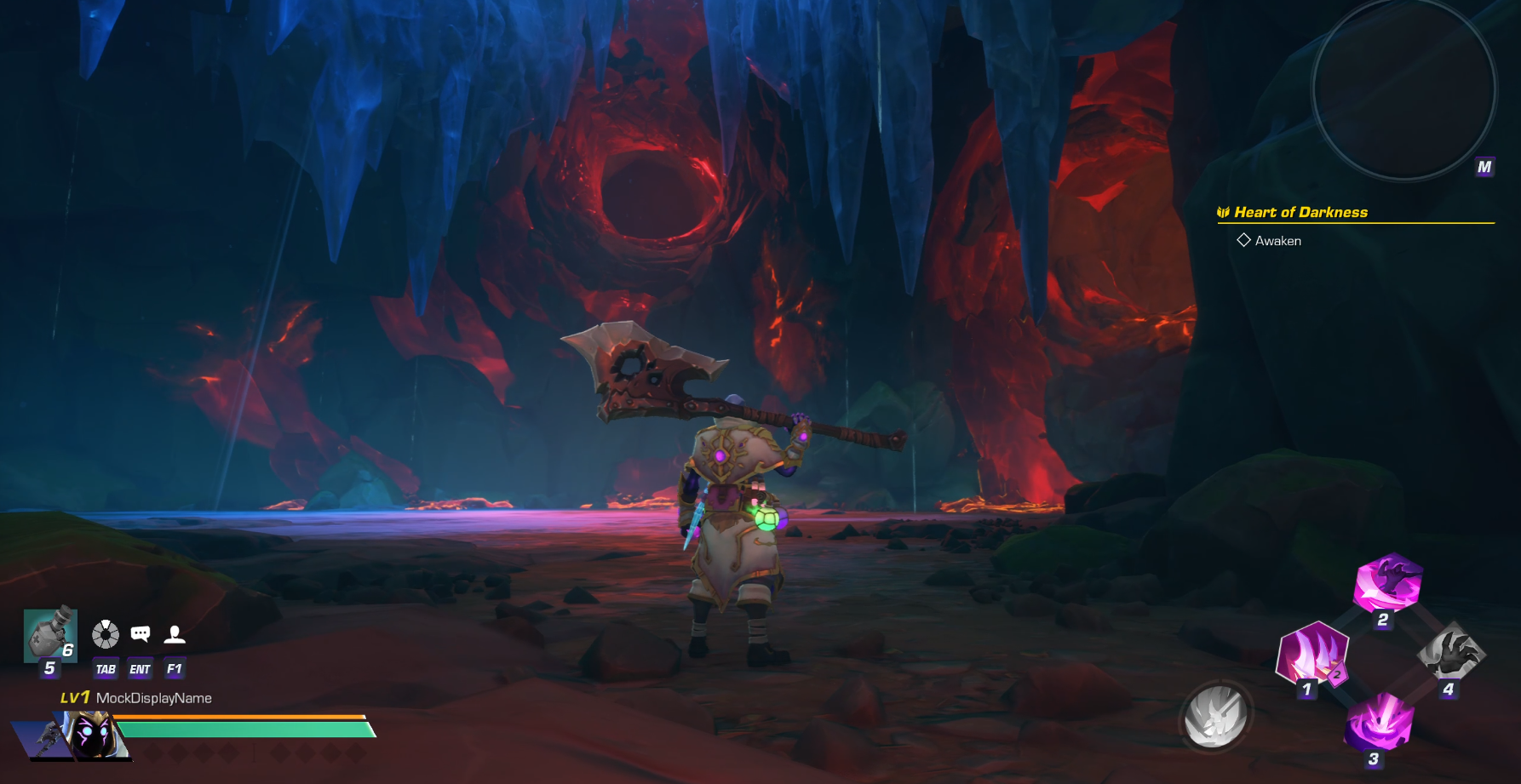
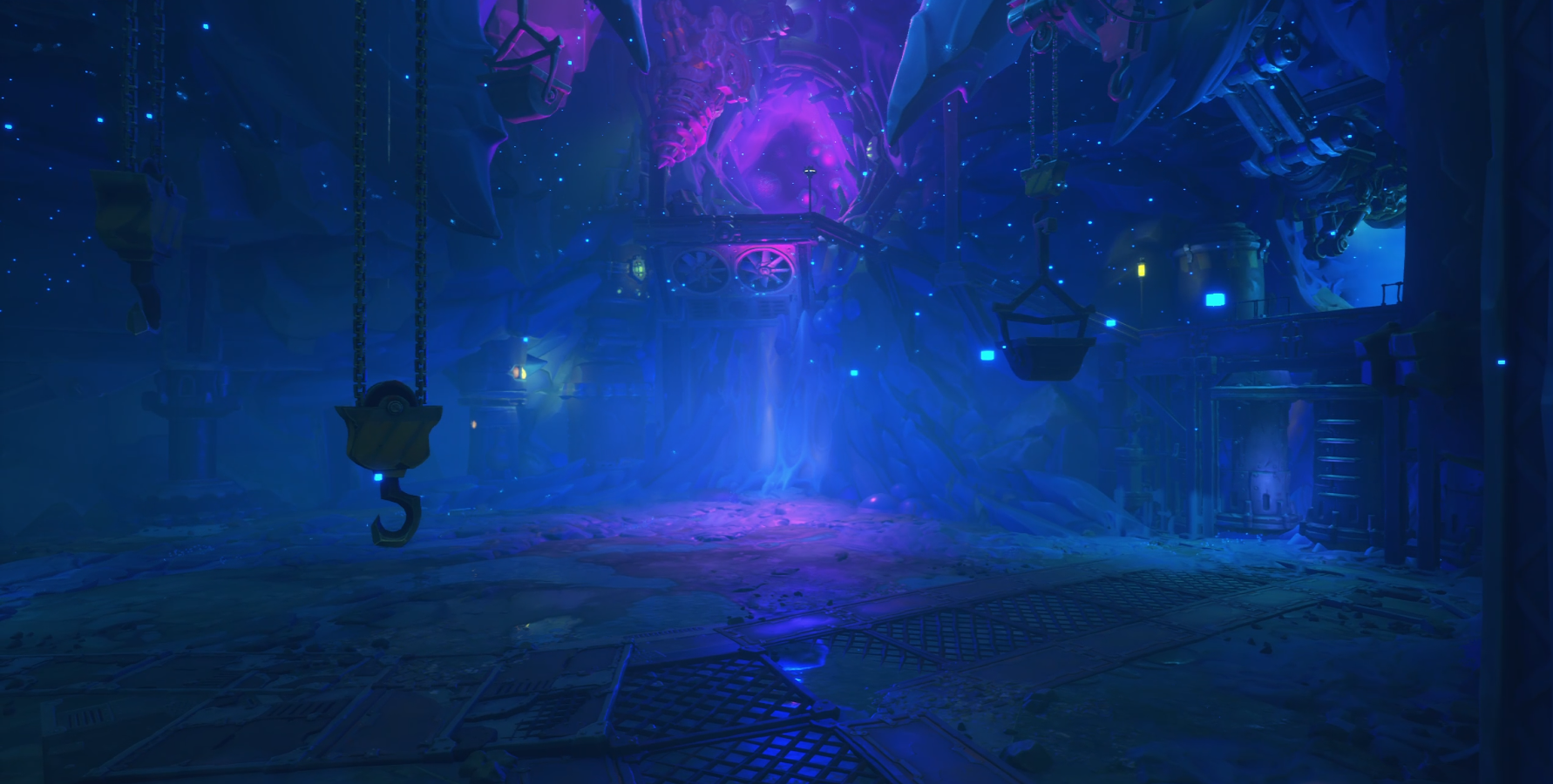
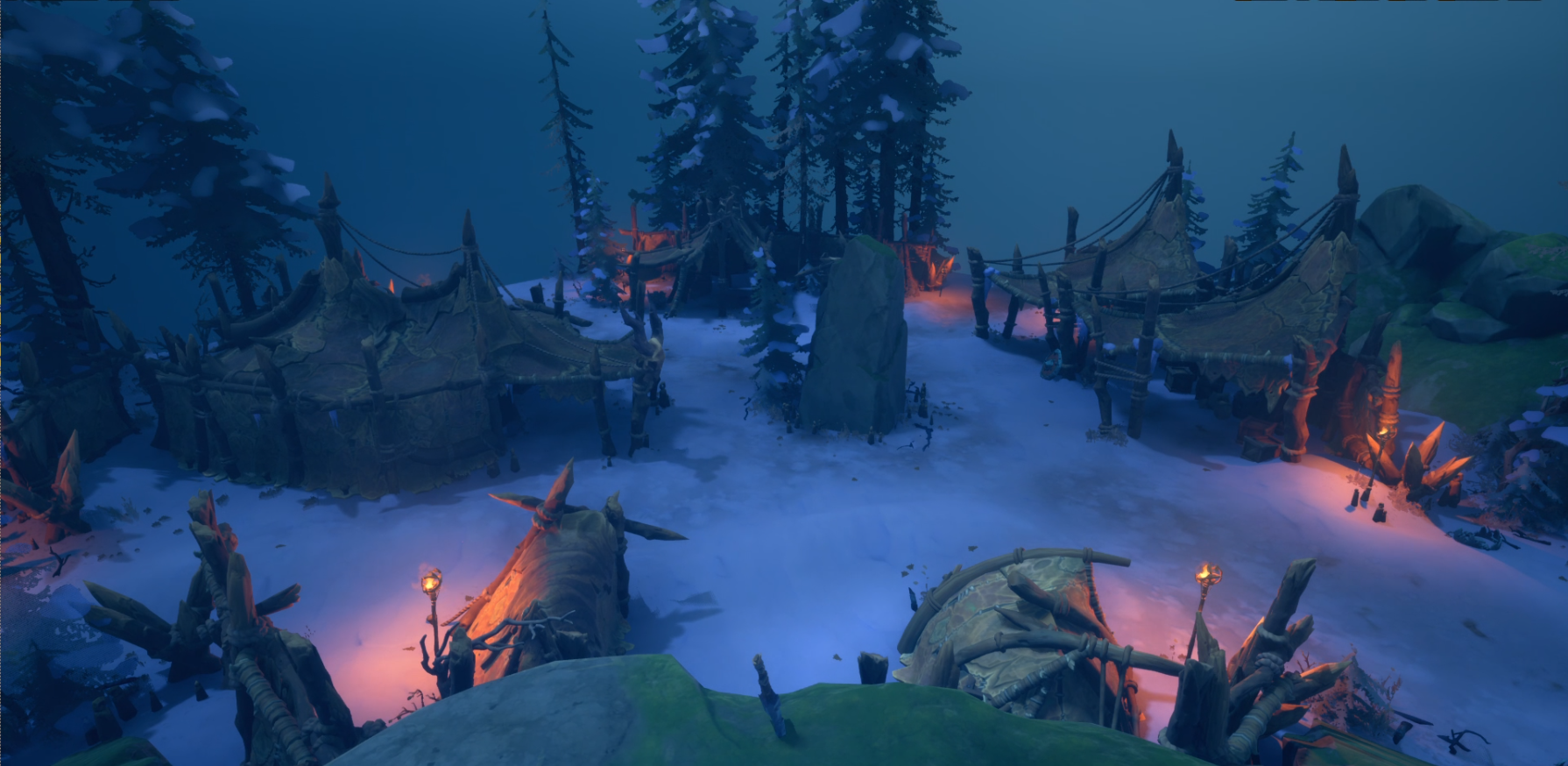
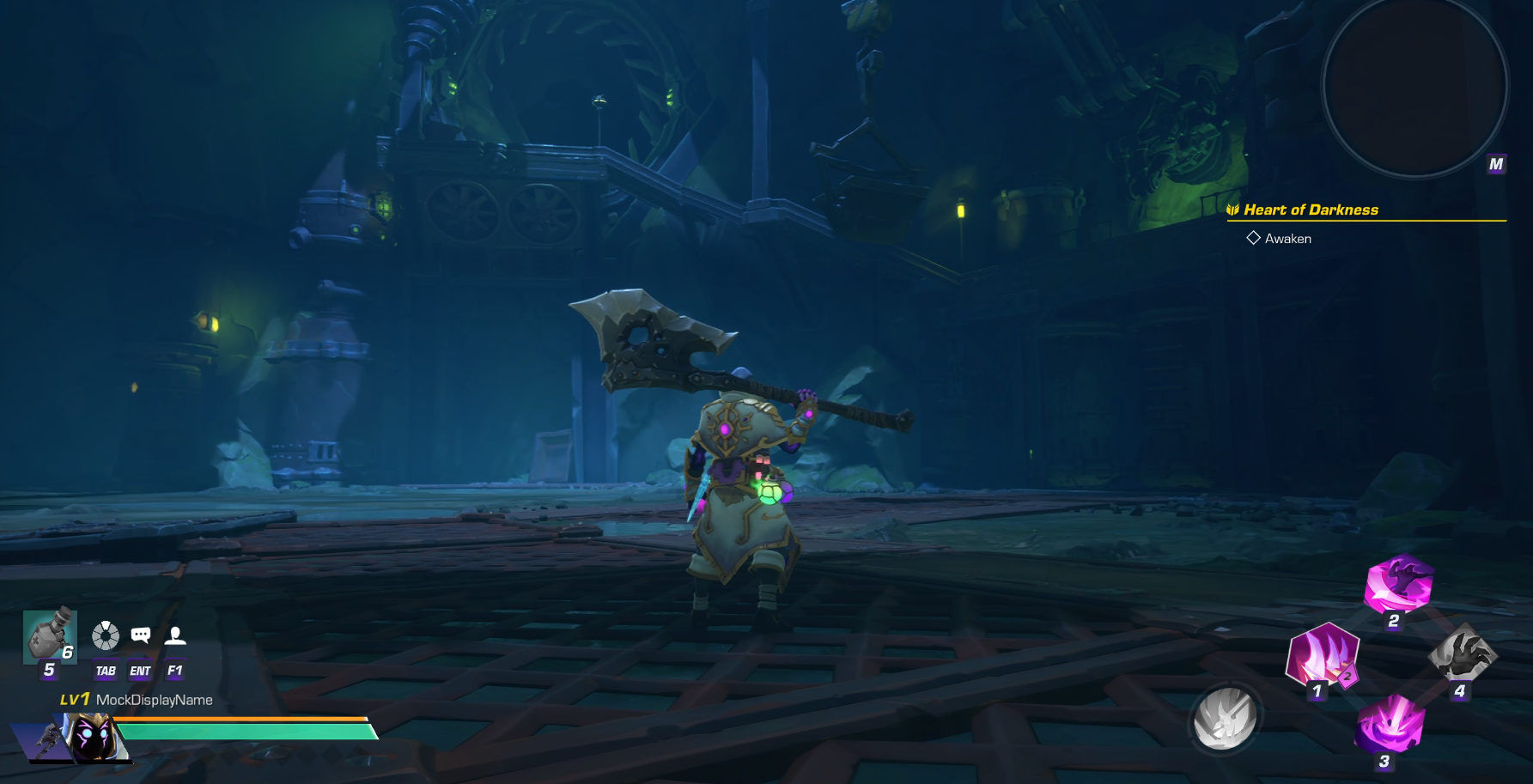
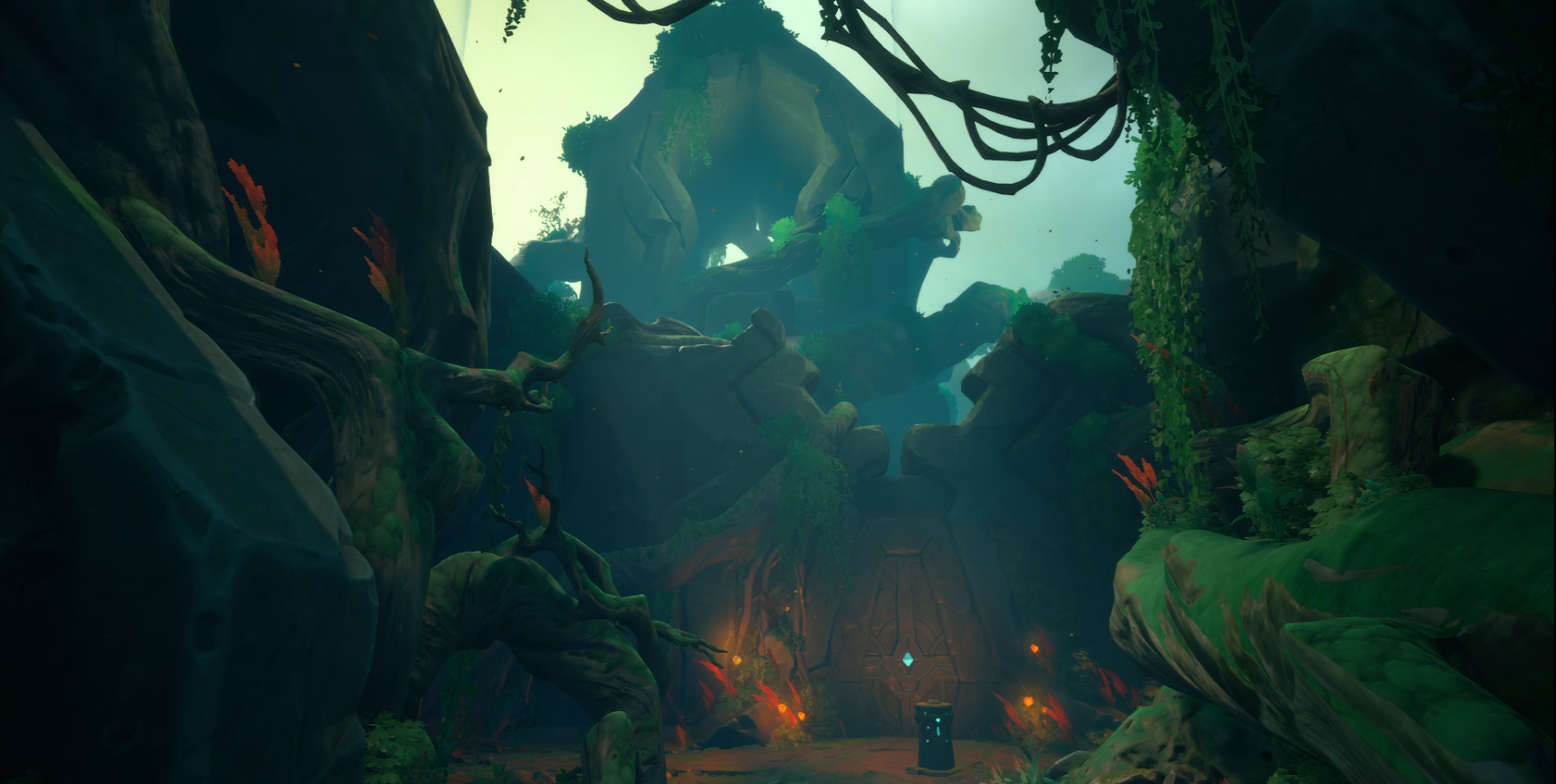
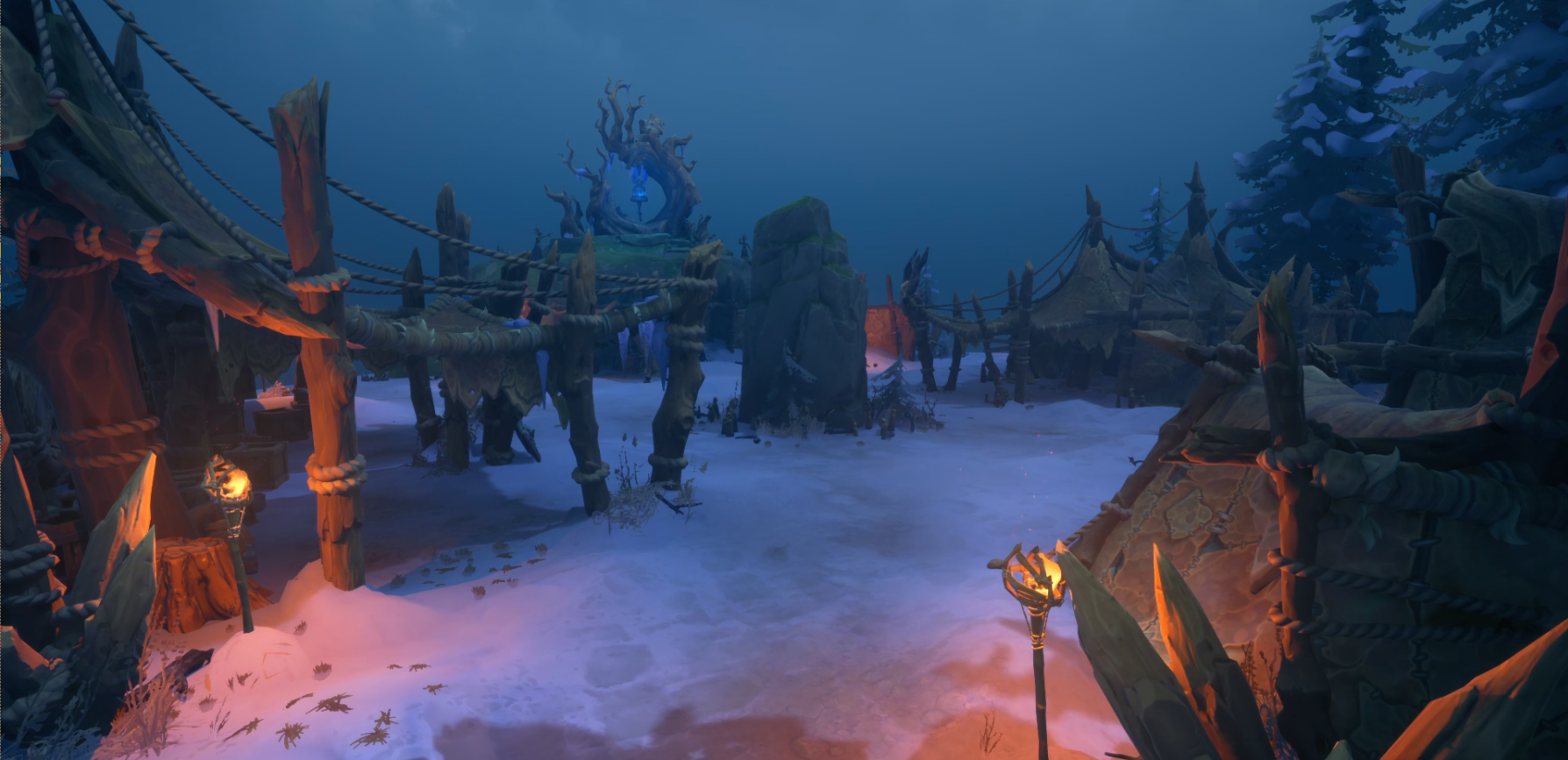
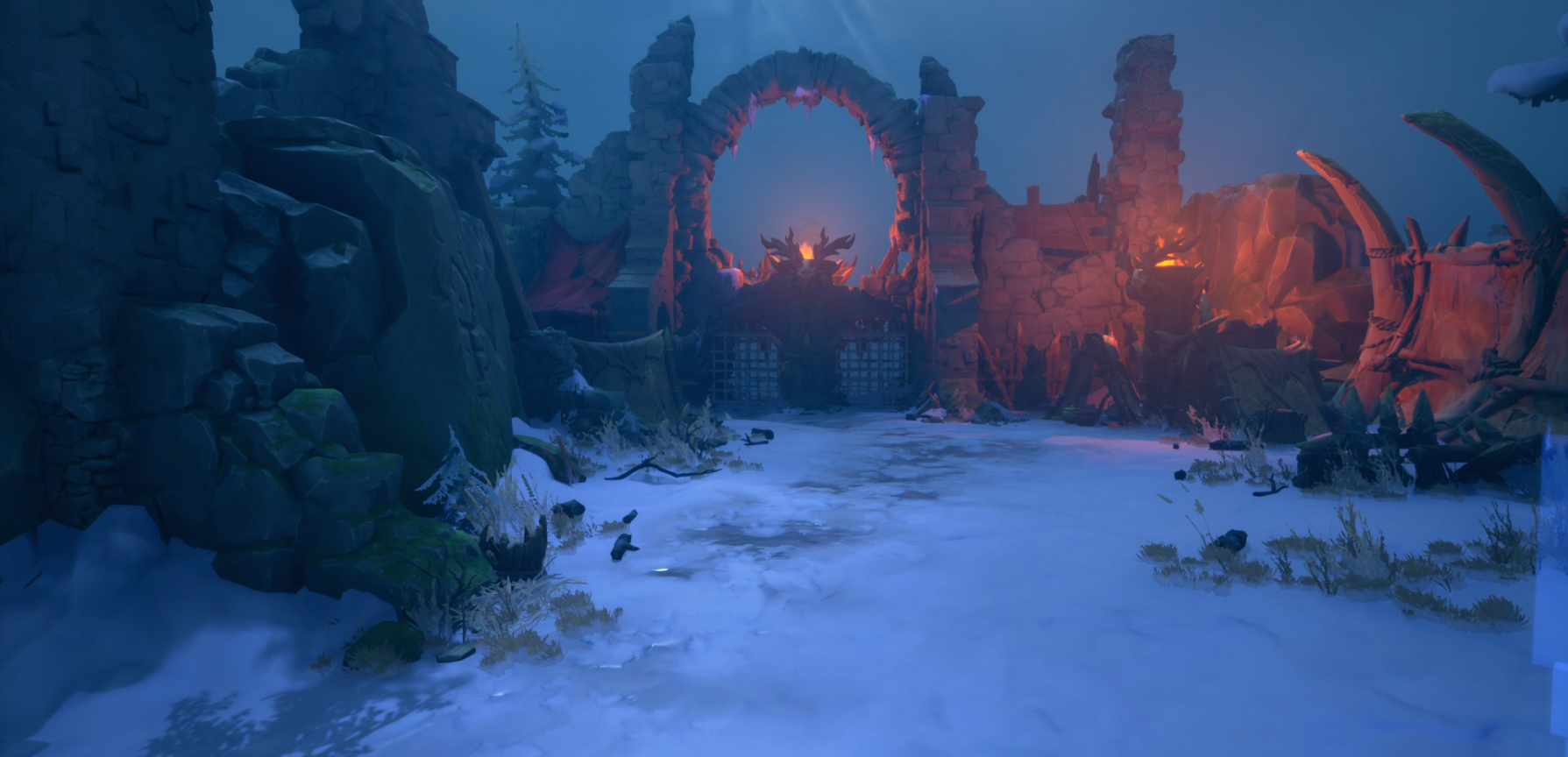
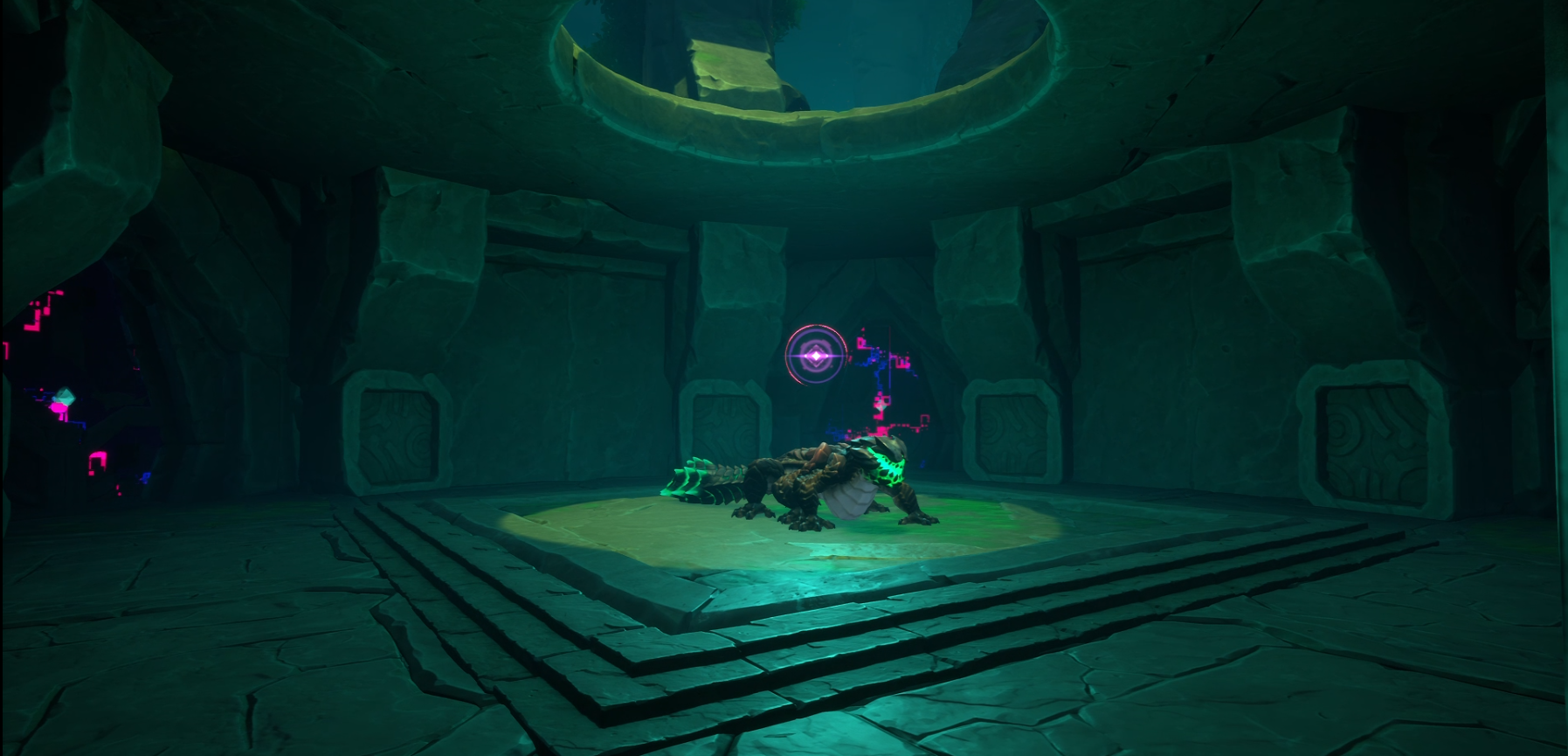
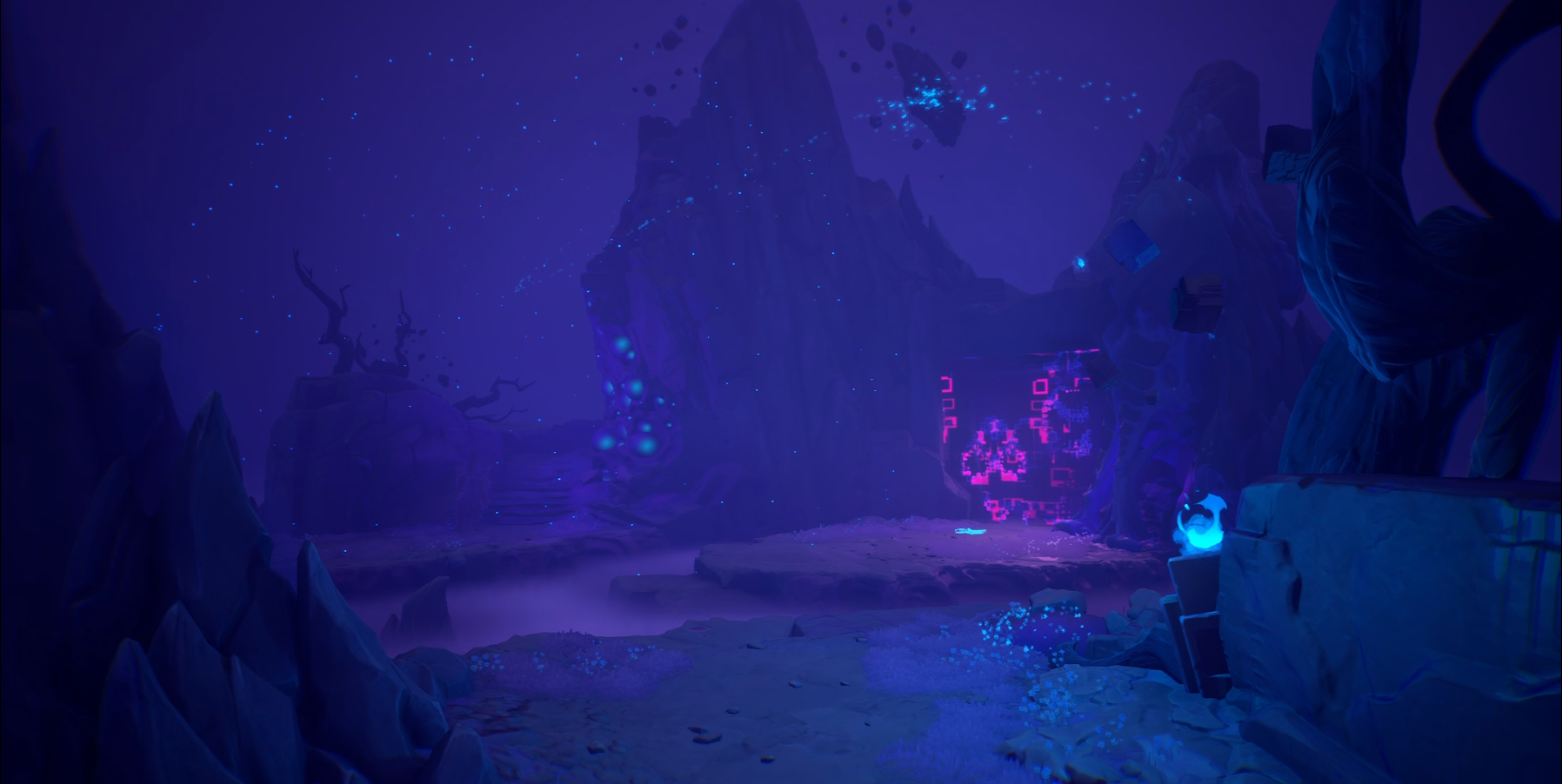
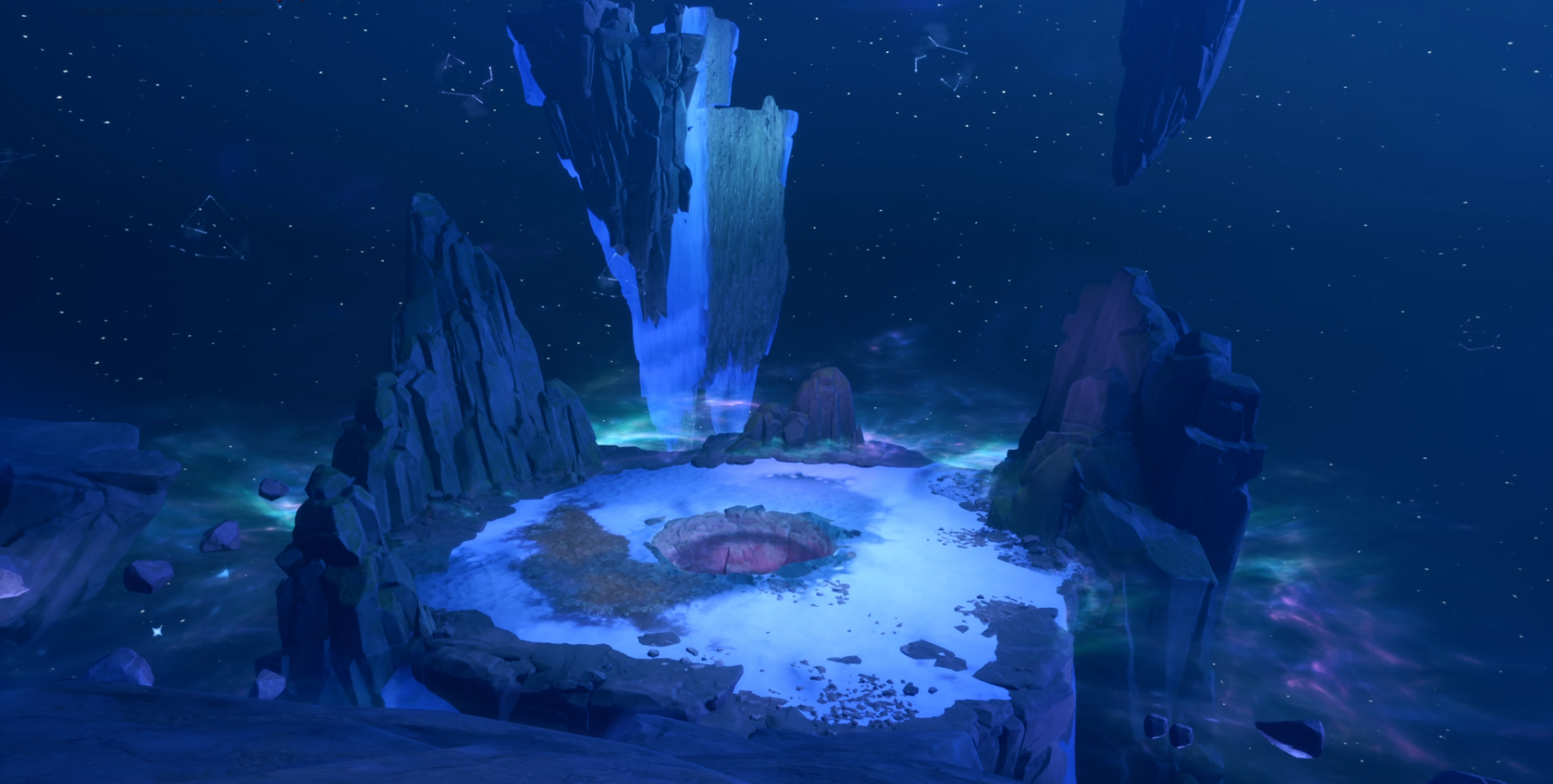
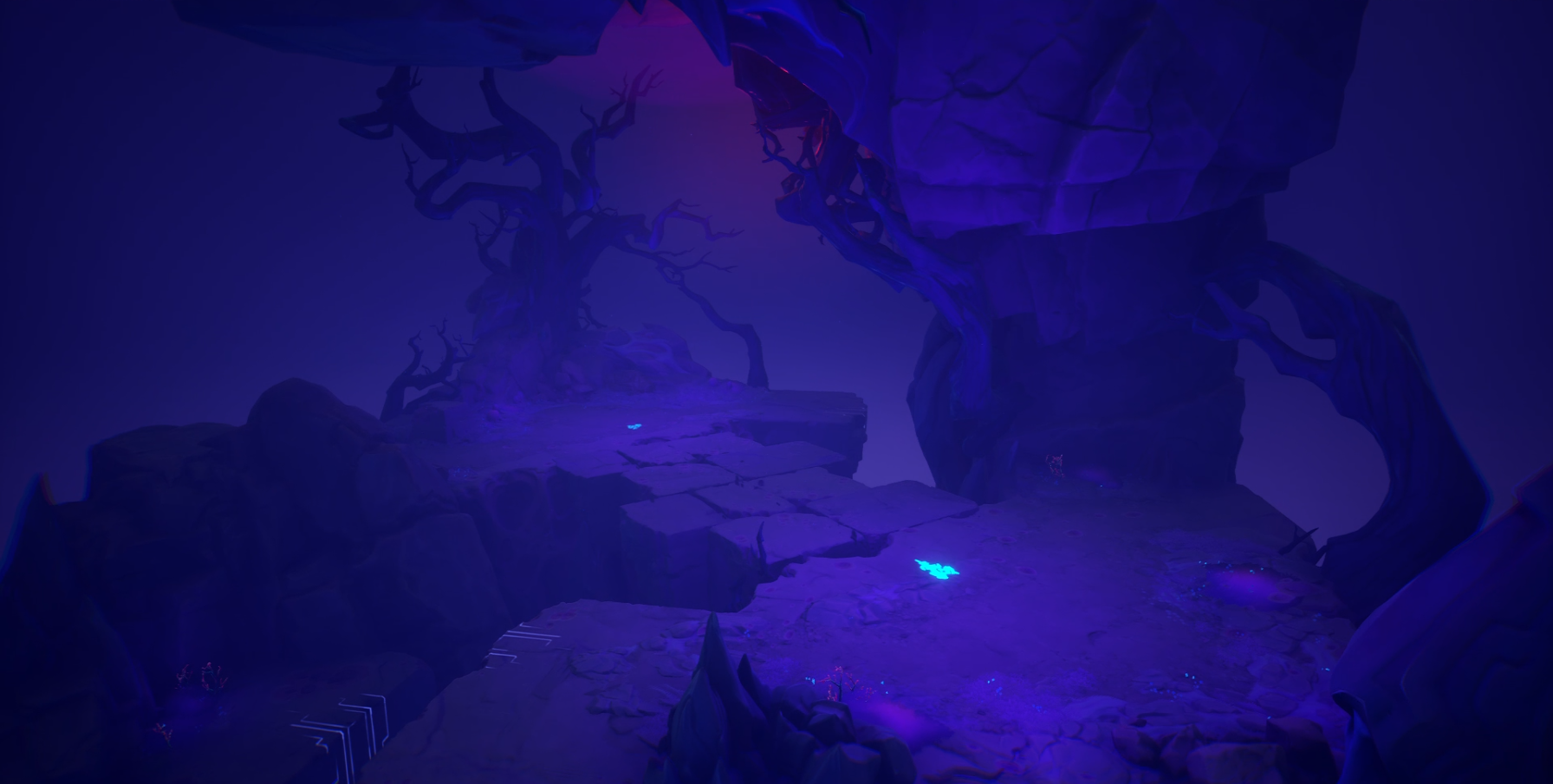
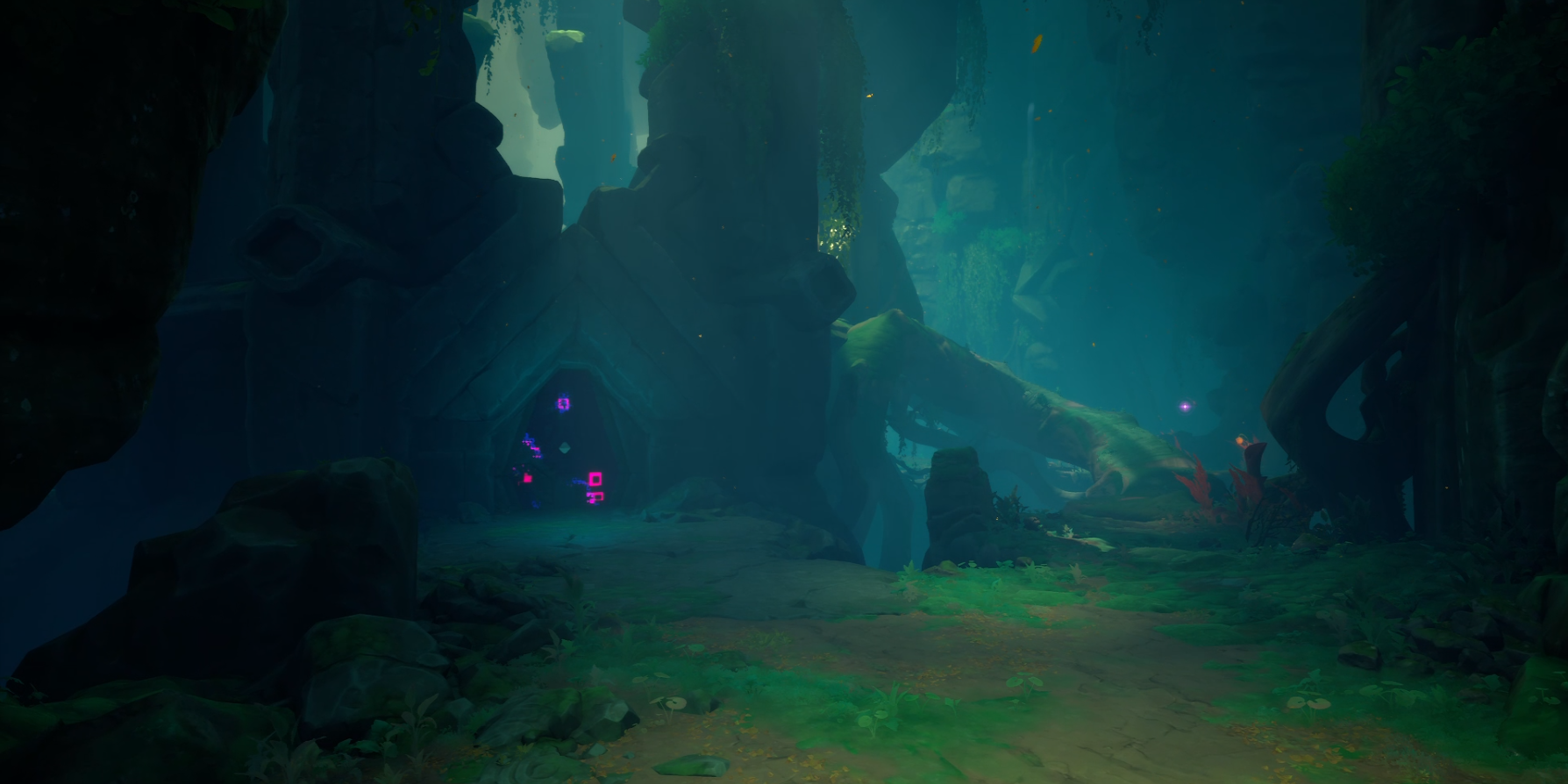
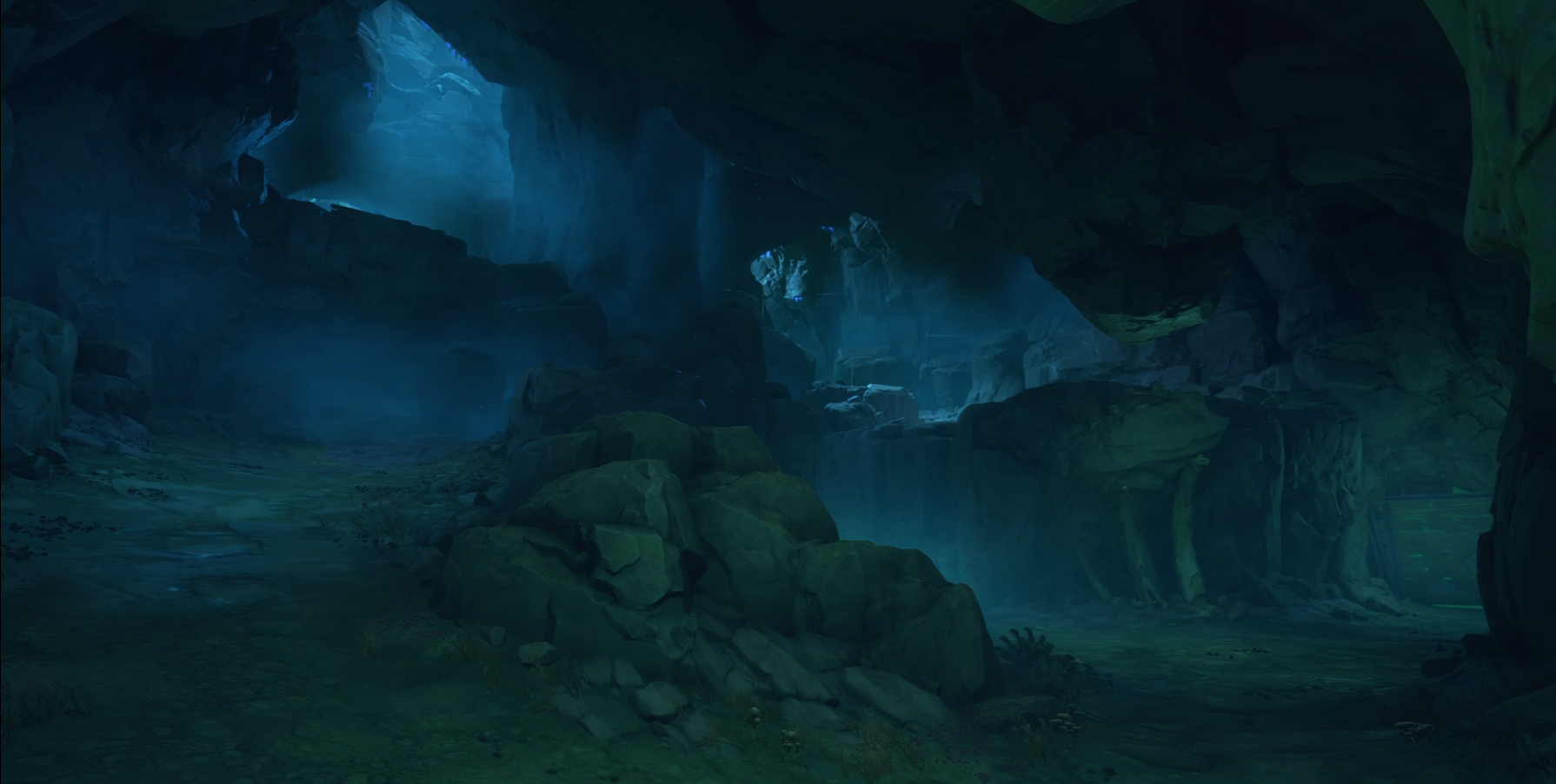
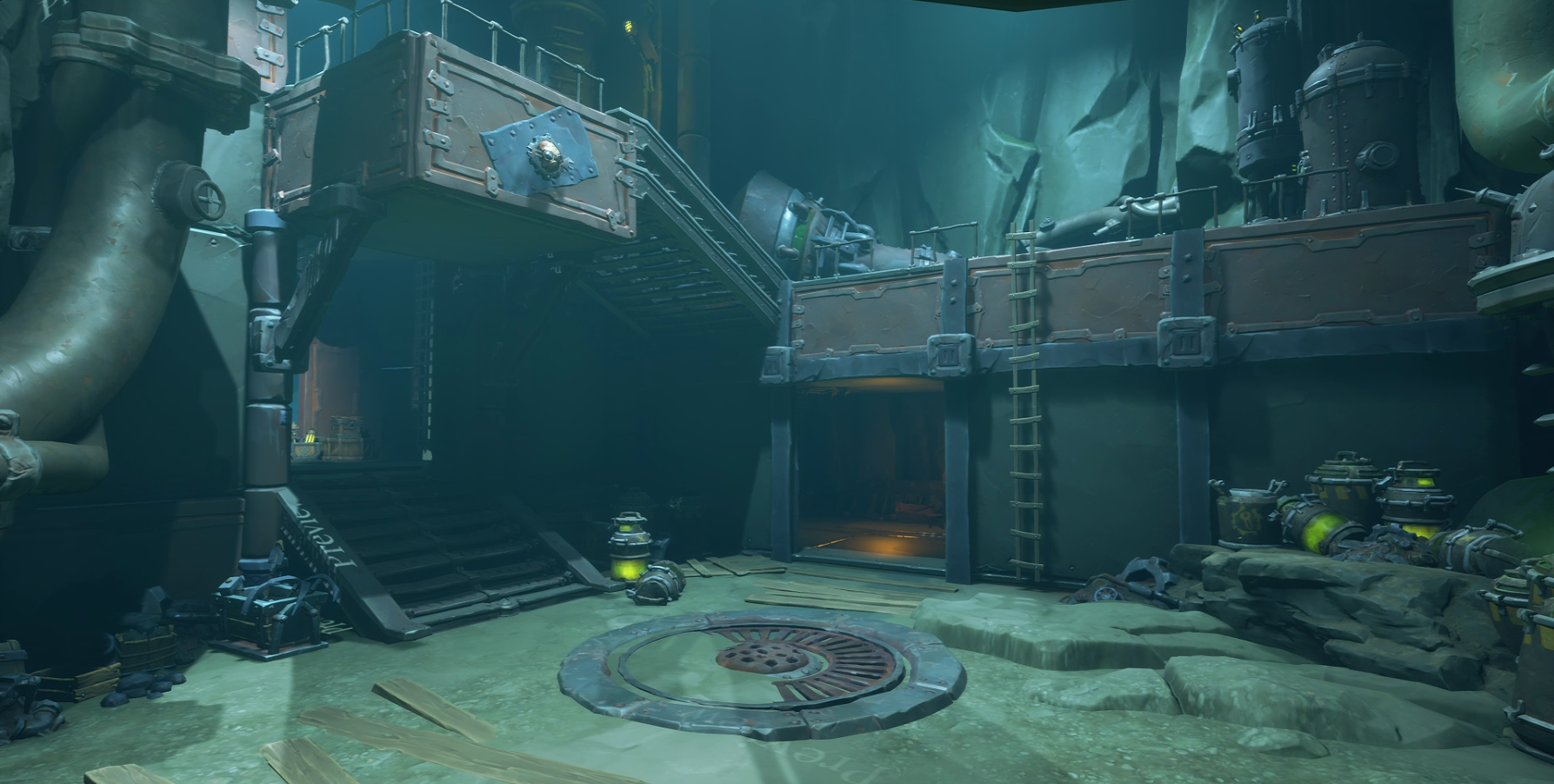
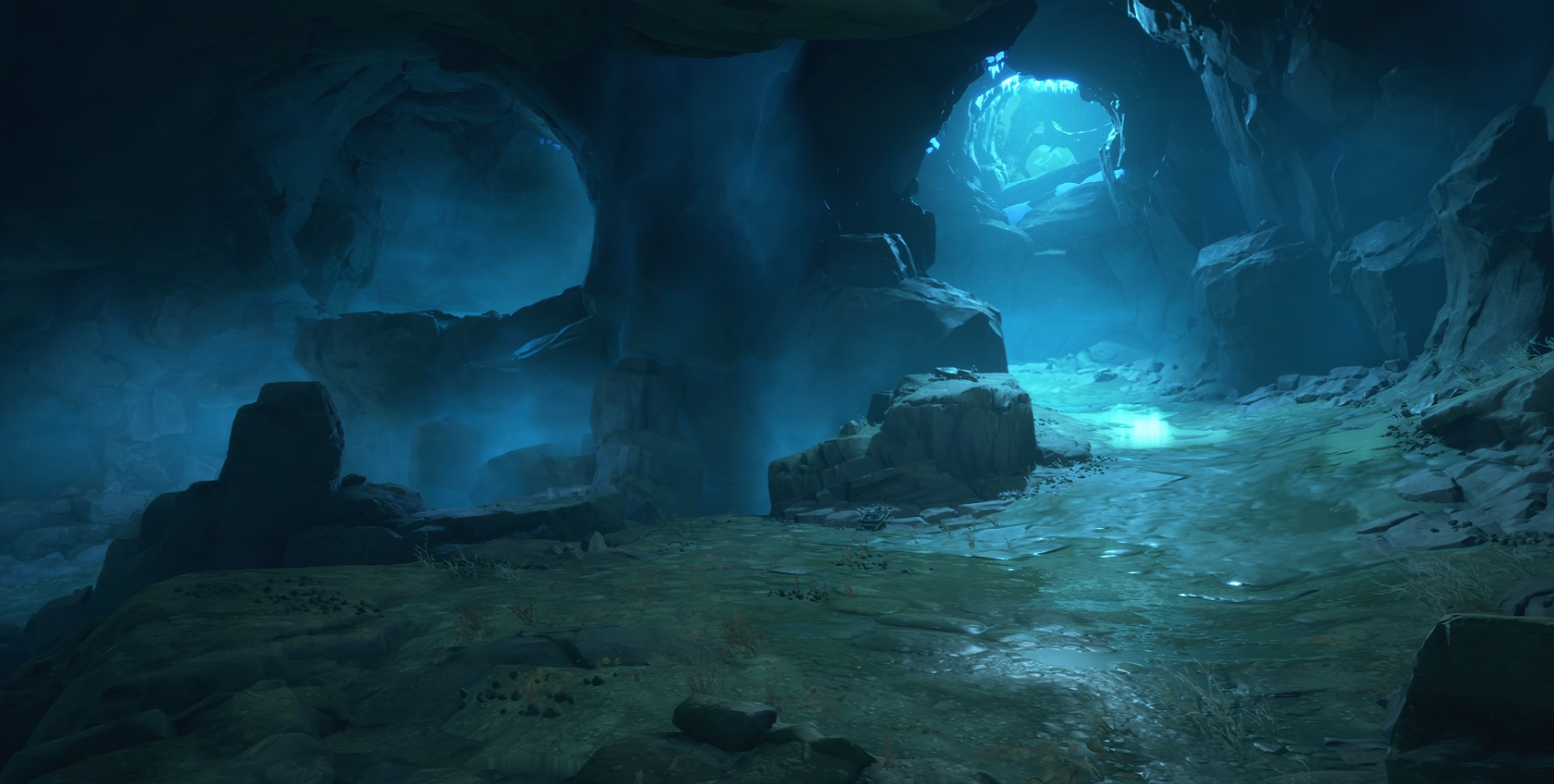
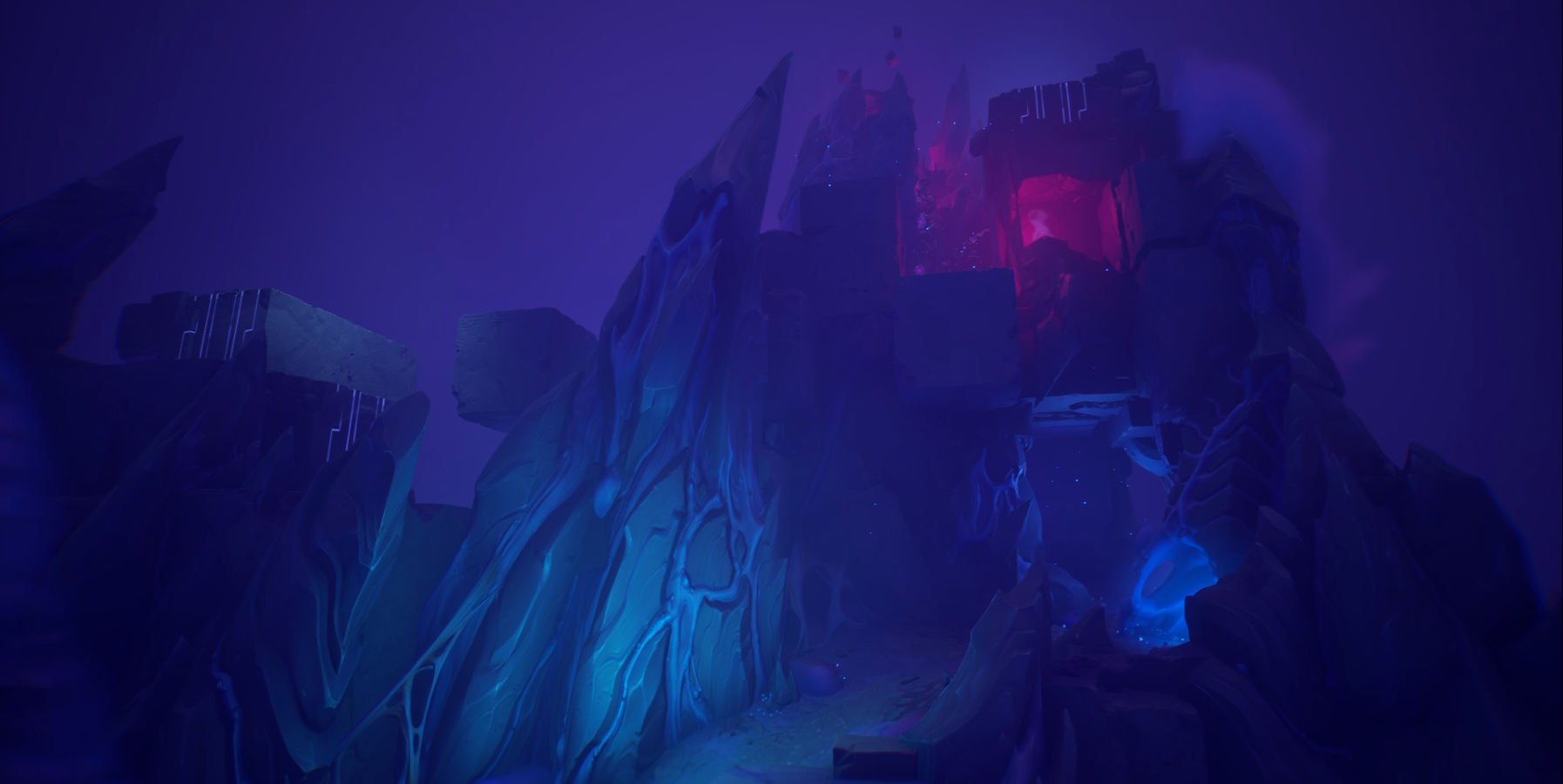
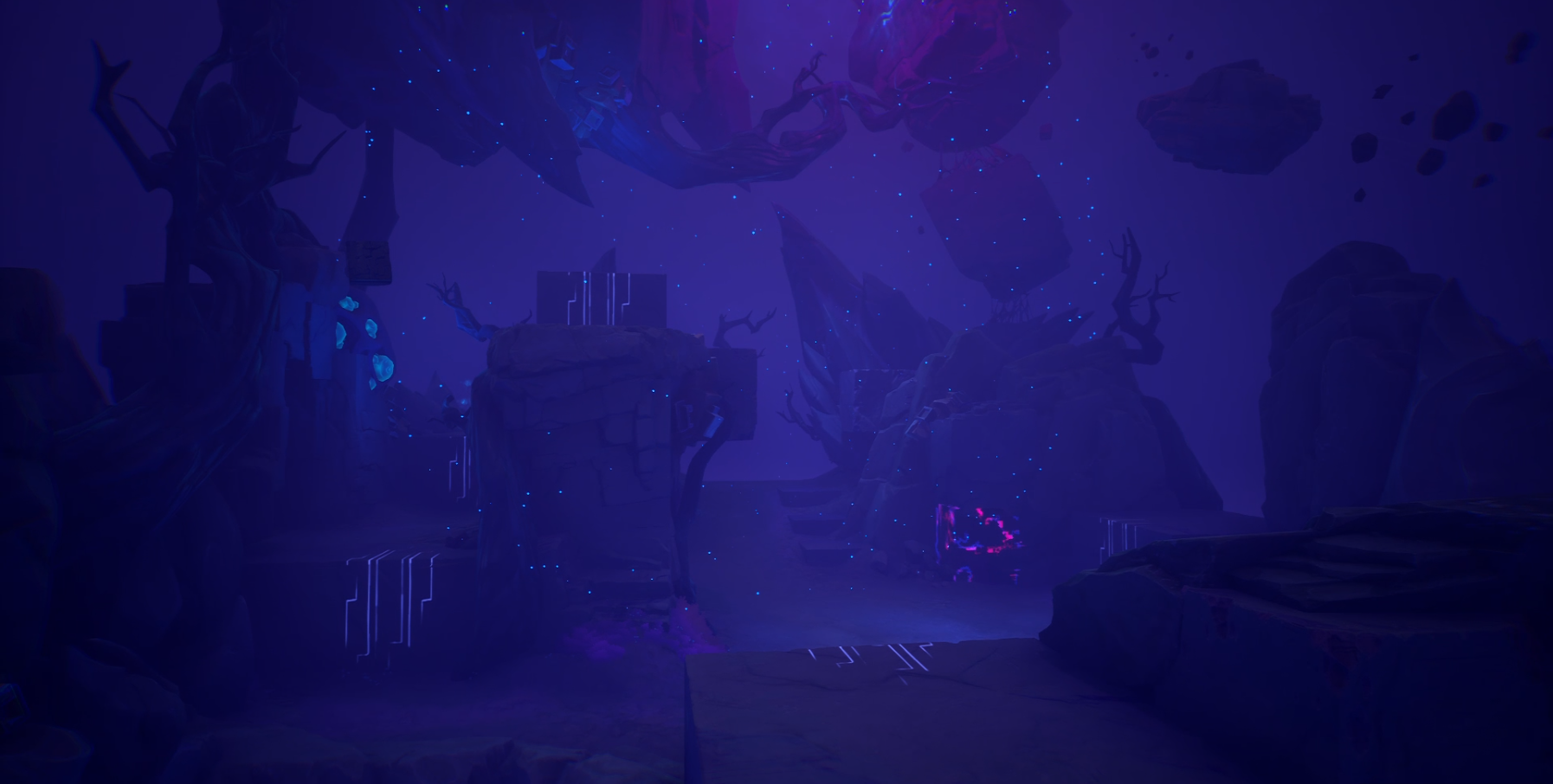
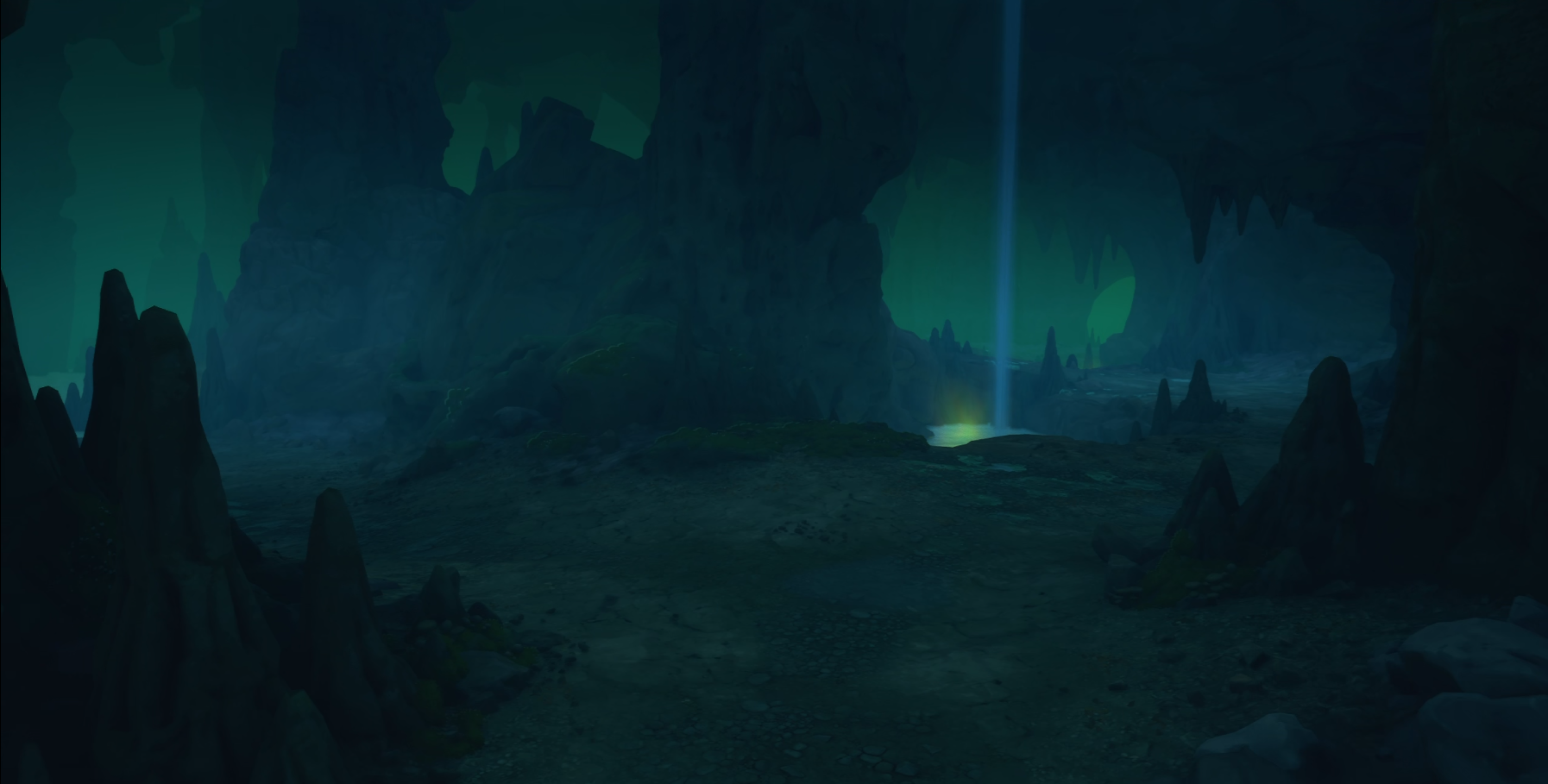

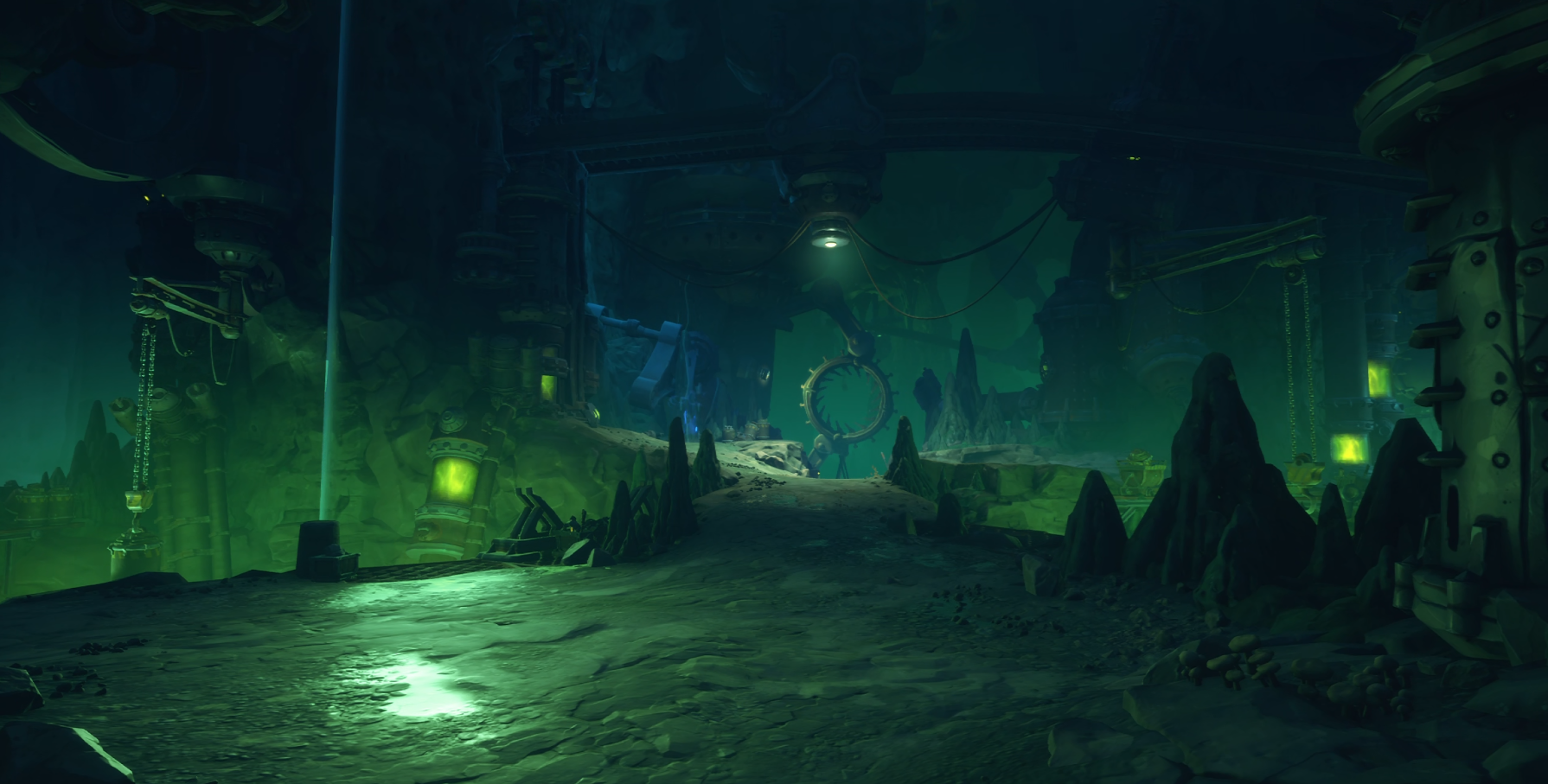
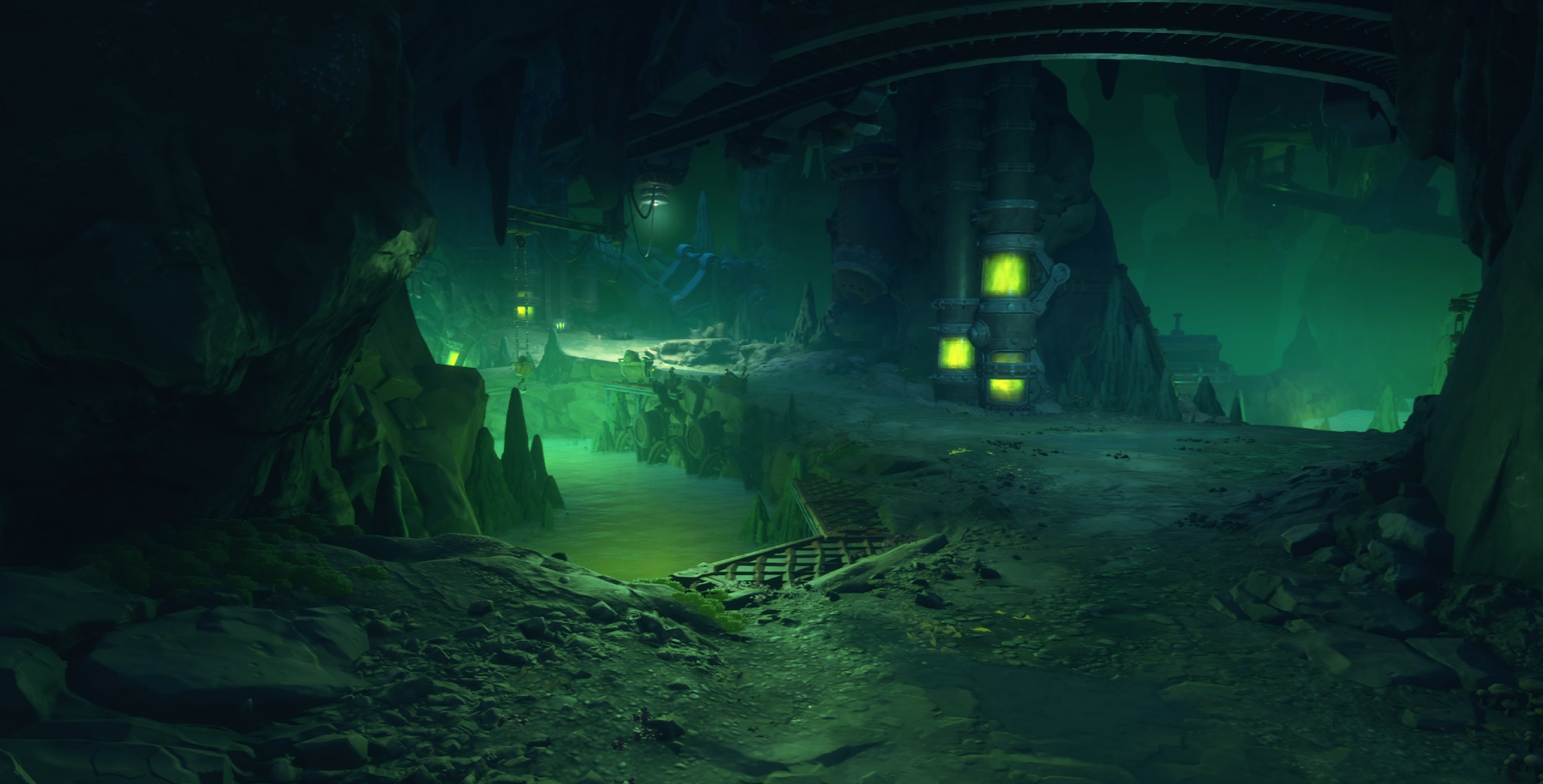
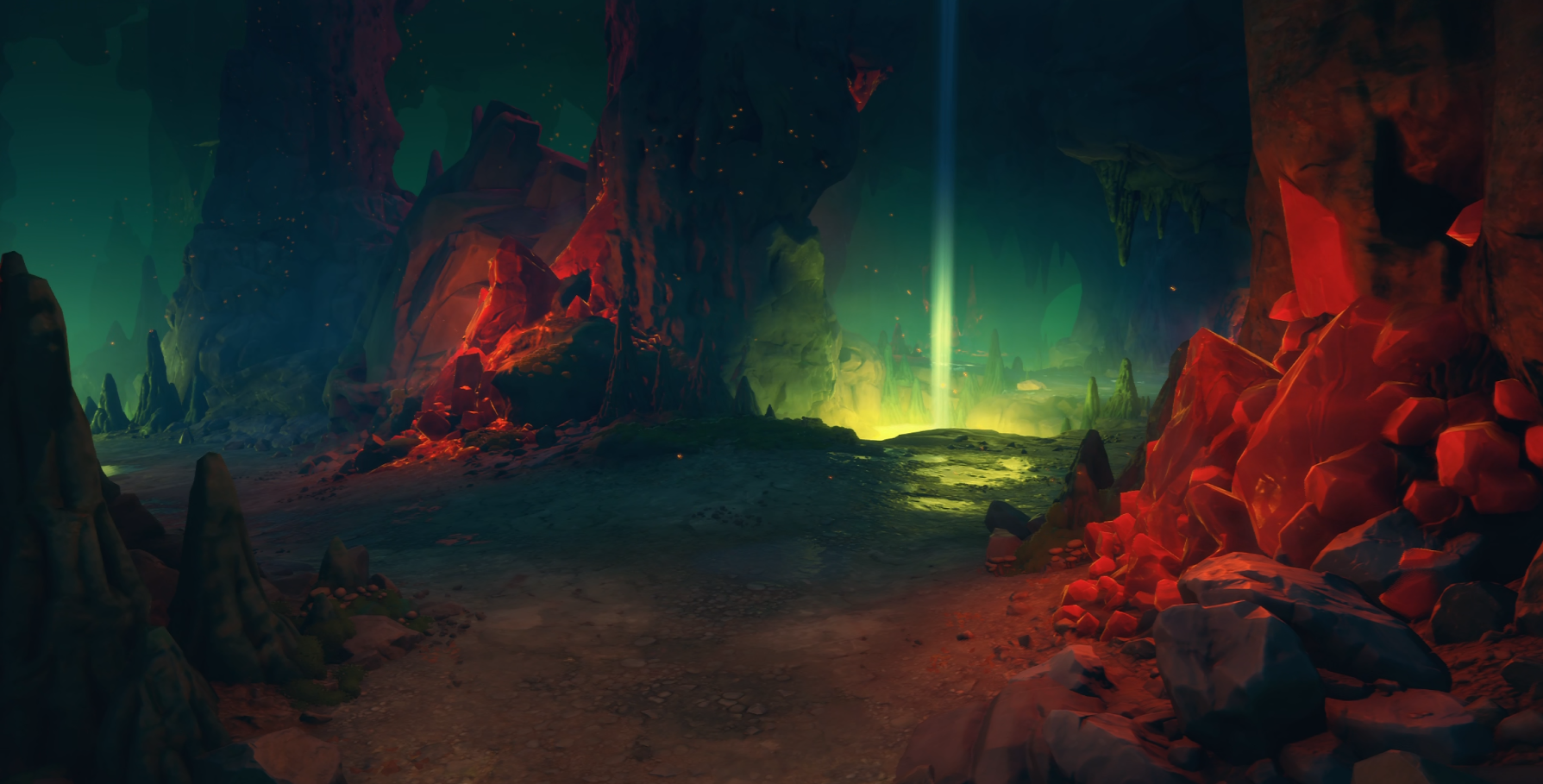
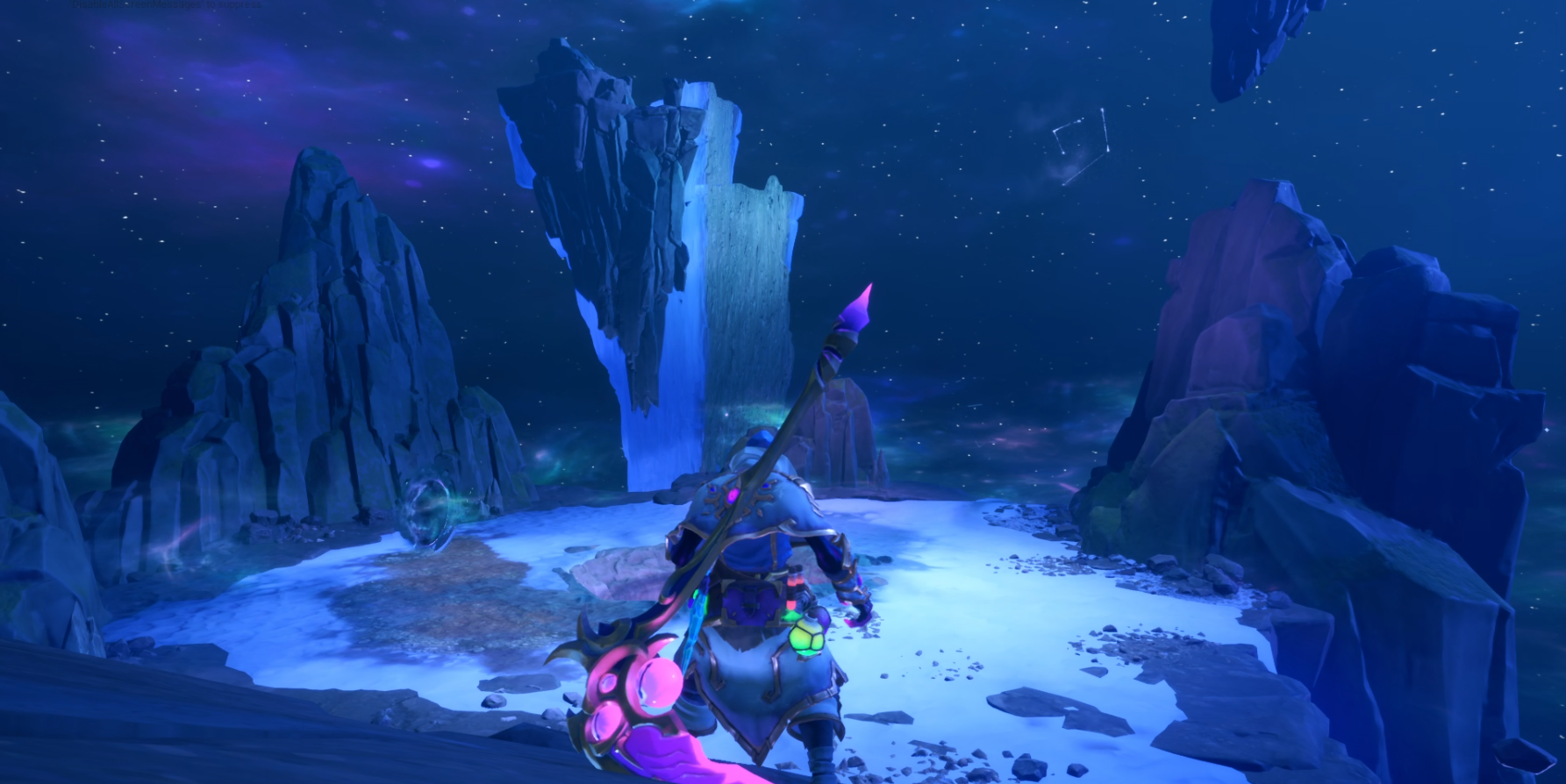

Open world Areas
For our newest open world zone, I blocked out 2 points of interest. One was a major POI with a custom event, while the other was a minor POI. They were an abandoned supply Outpost and an auxiliary watch tower.
Since the Outpost was a core POI of the zone, I designed it with a lot of verticality to be a landmark.
It was designed with 4 unique entry points across the entire Outpost to accommodate players being able to approach the POI from any direction.
Aside from being a landmark, the area had to be conducive for combat as well as a mini boss battle.
As verticality was an important design element for the Outpost, I turned traversing to the top of the tower into a series of fun jumping challenges.
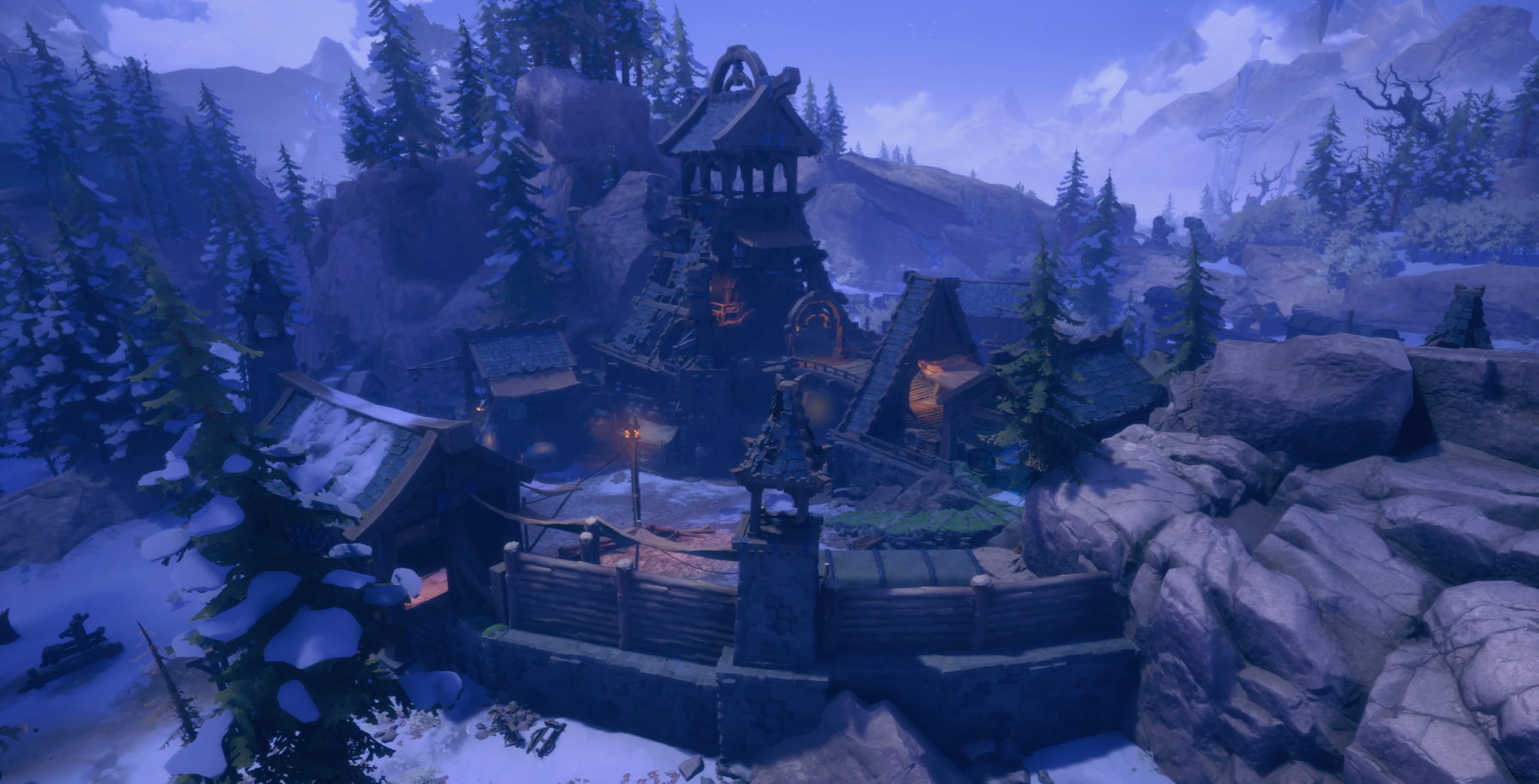
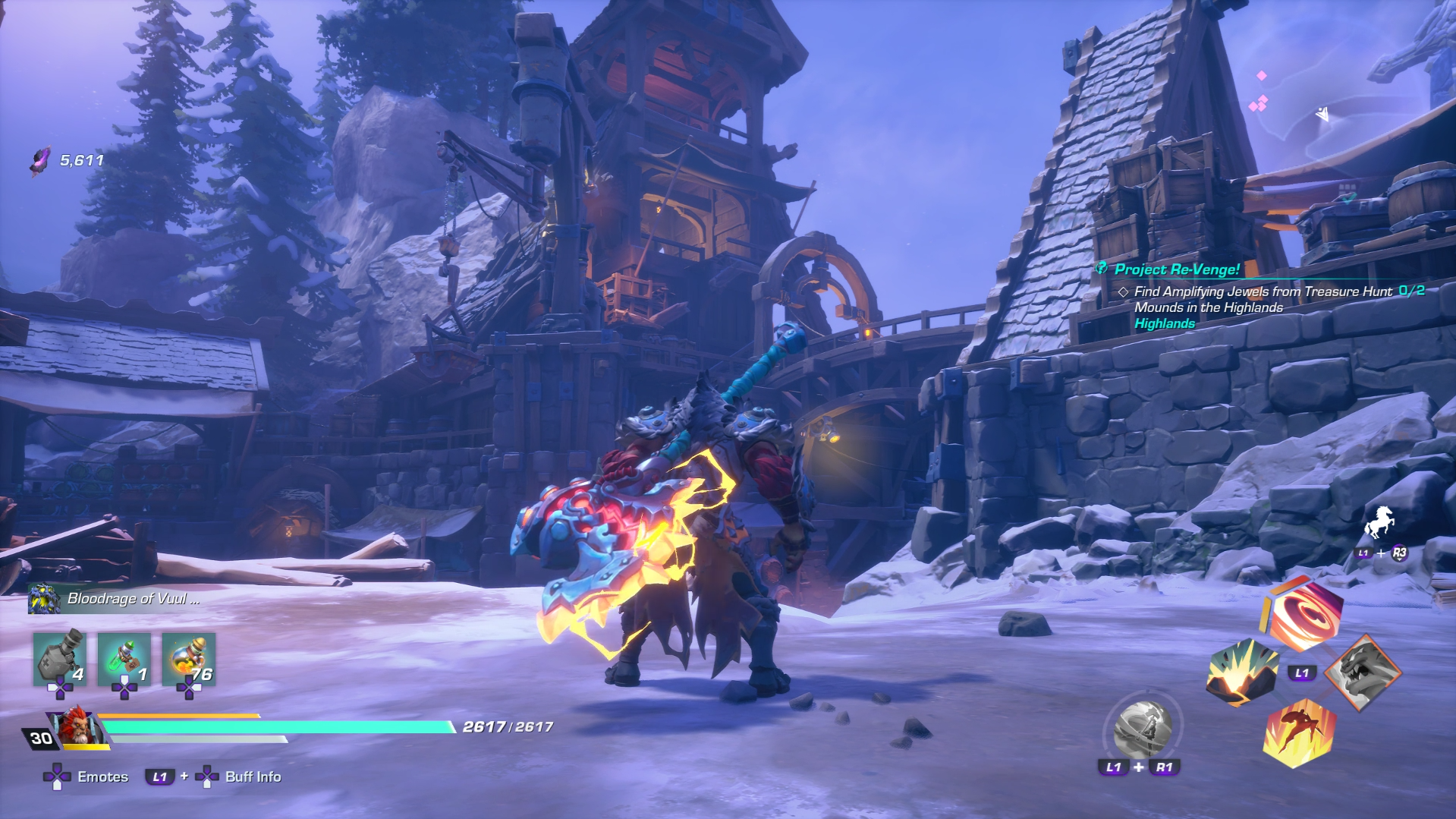
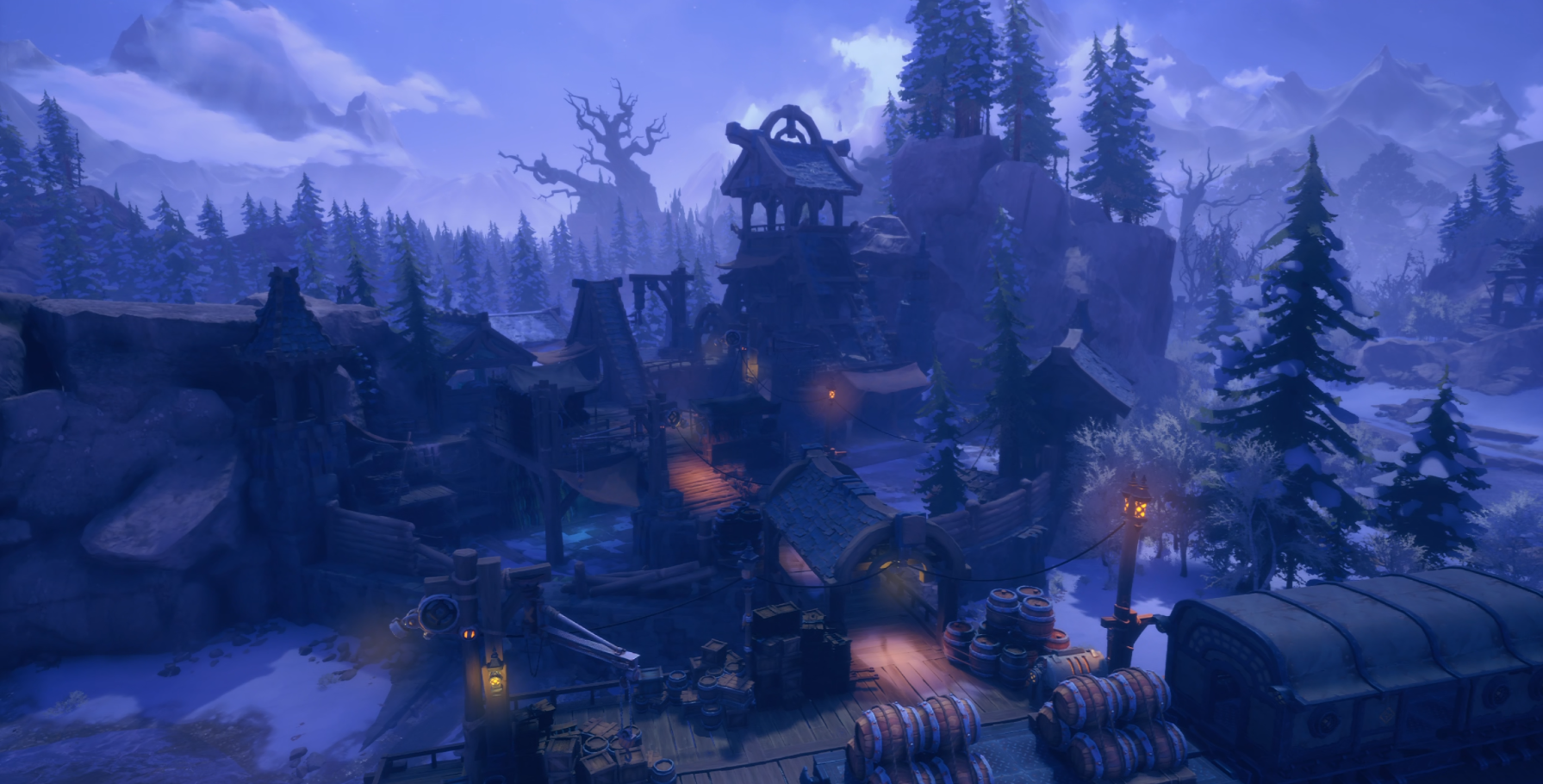
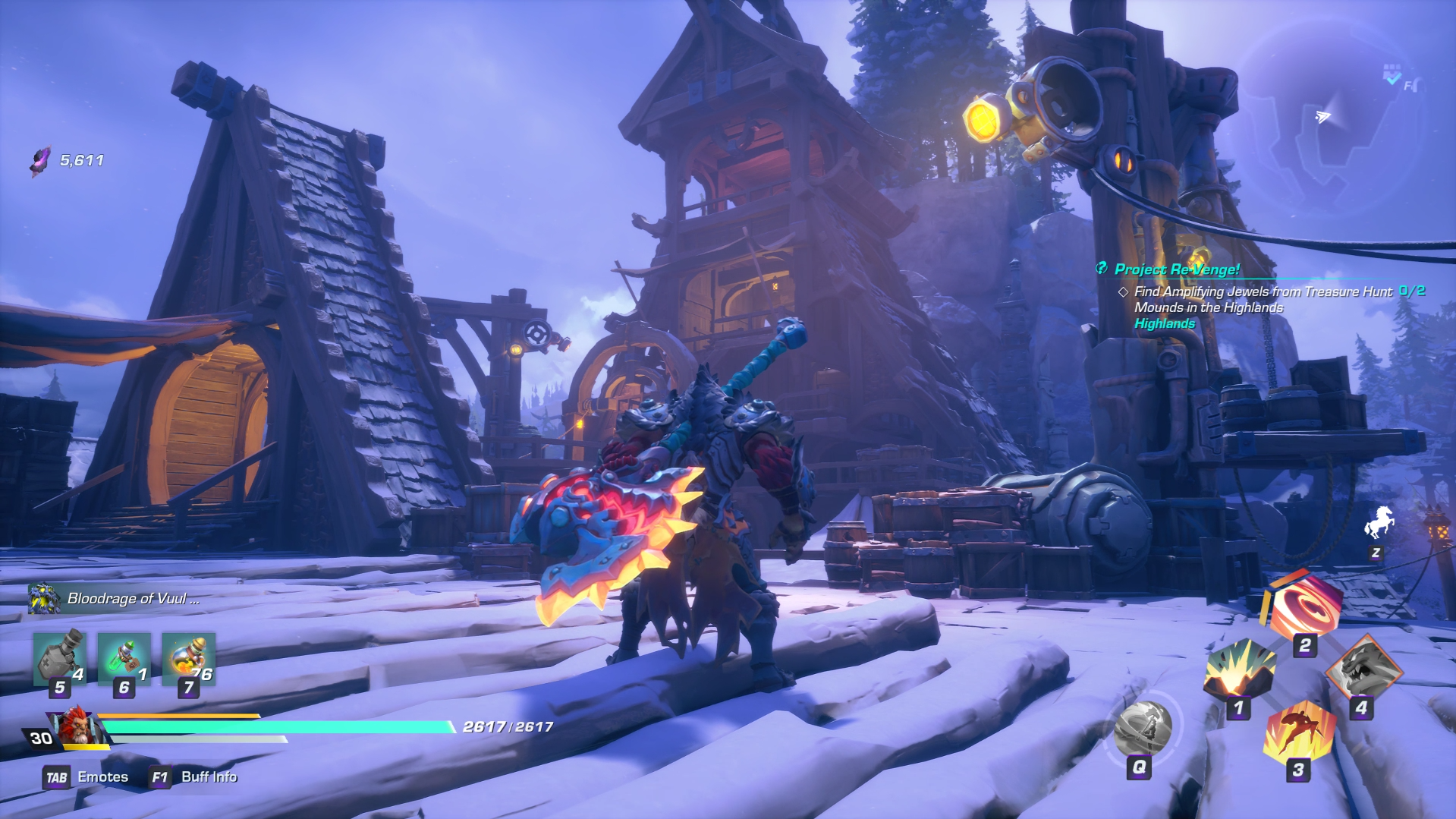
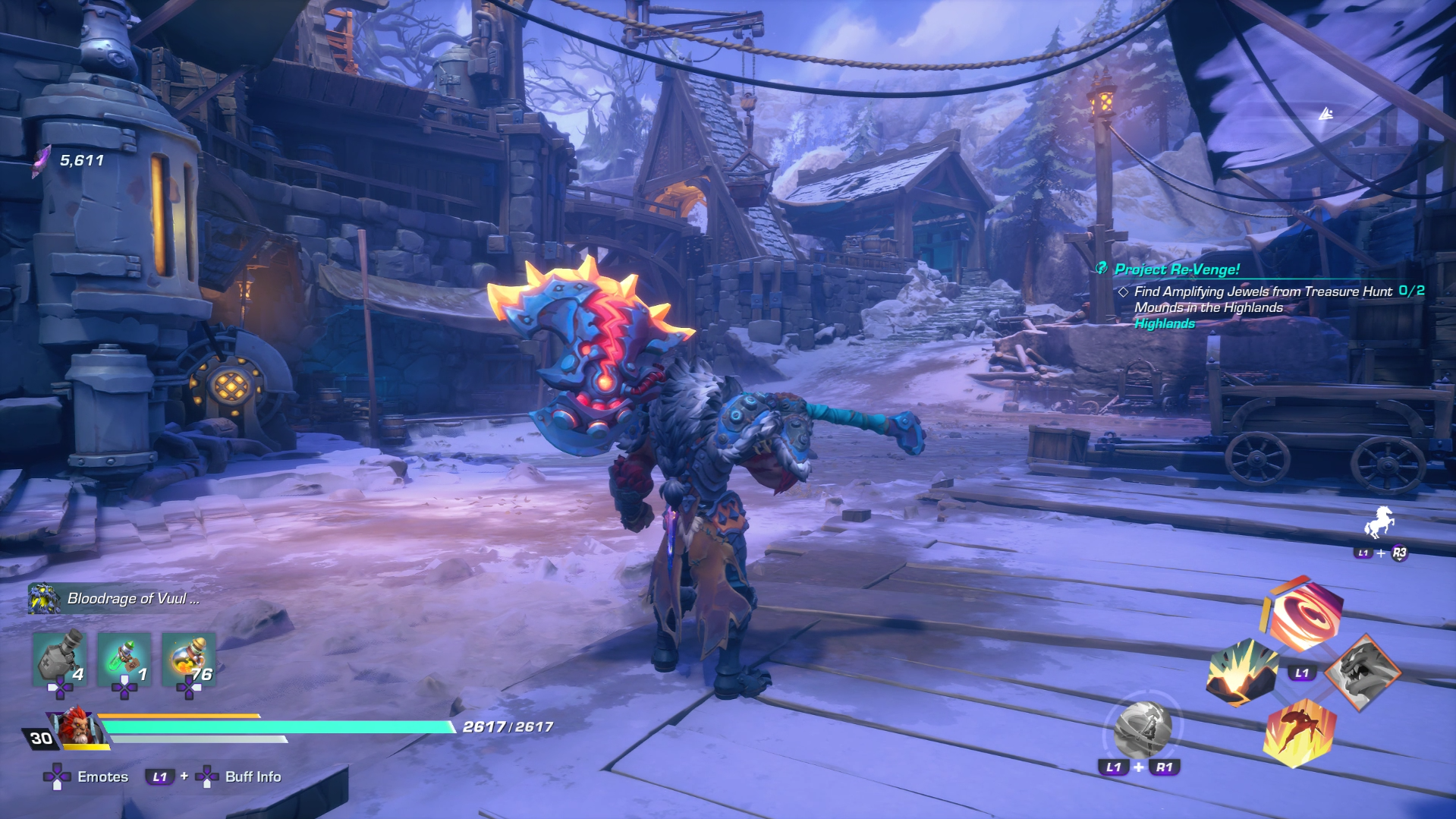
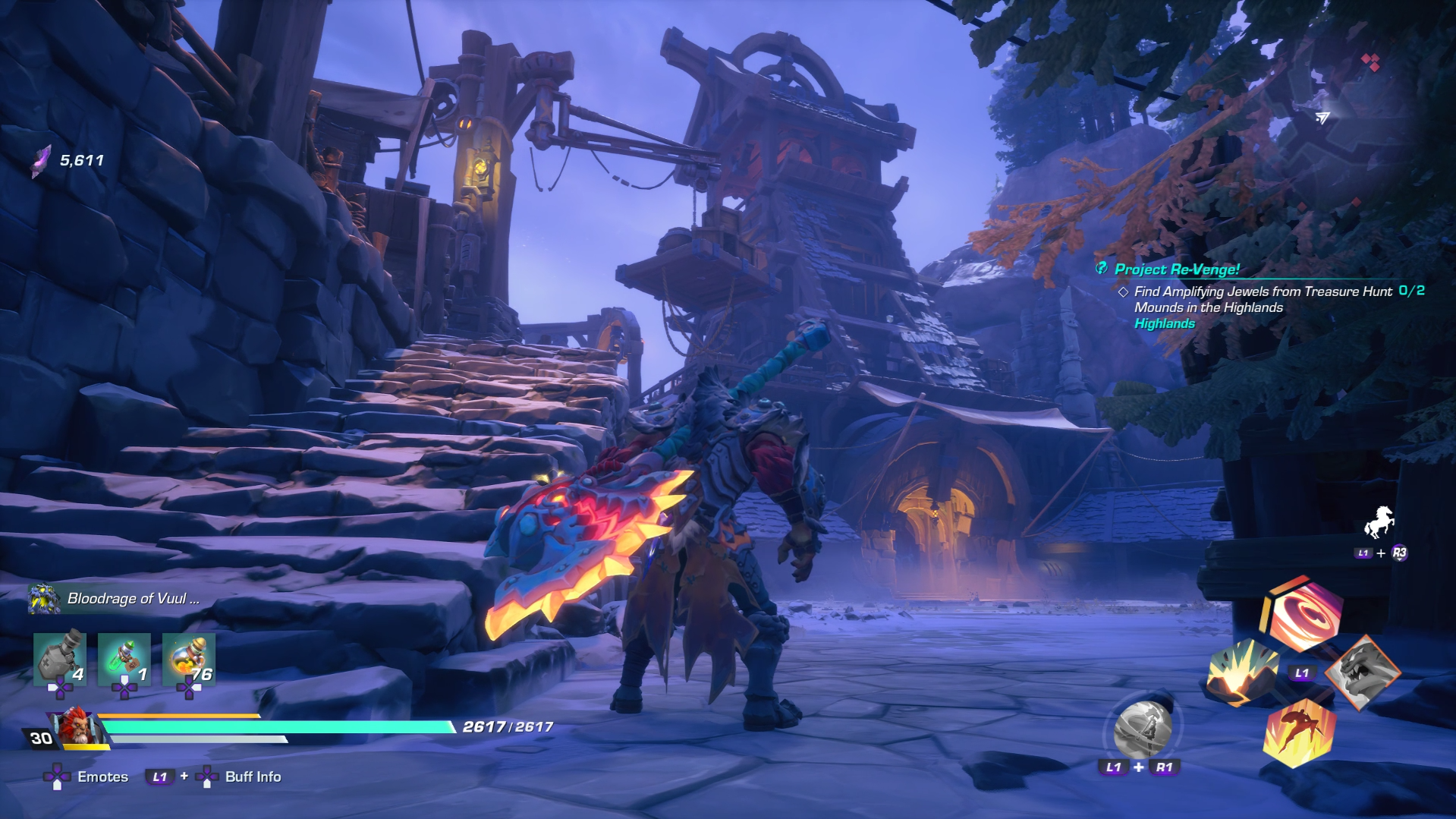
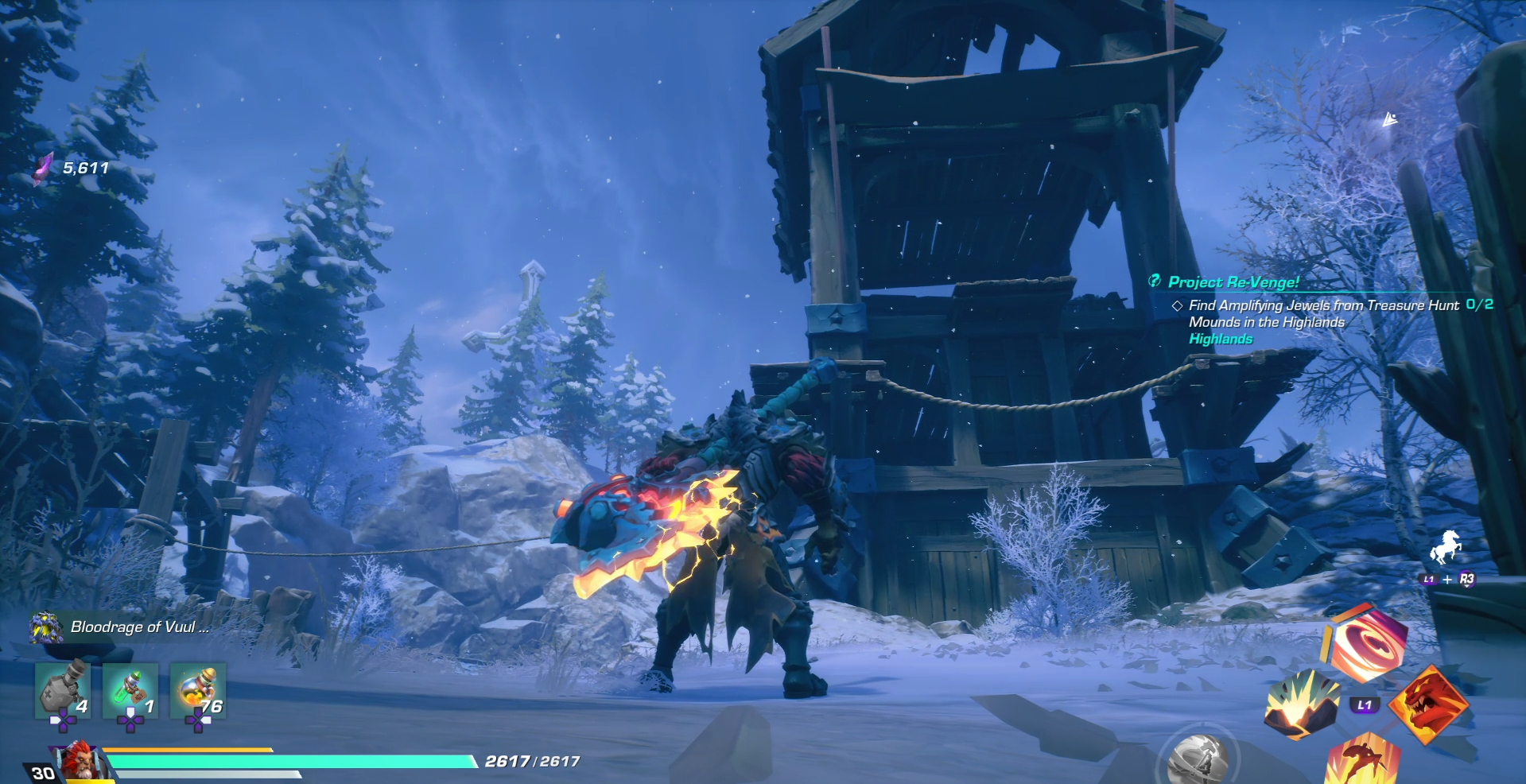
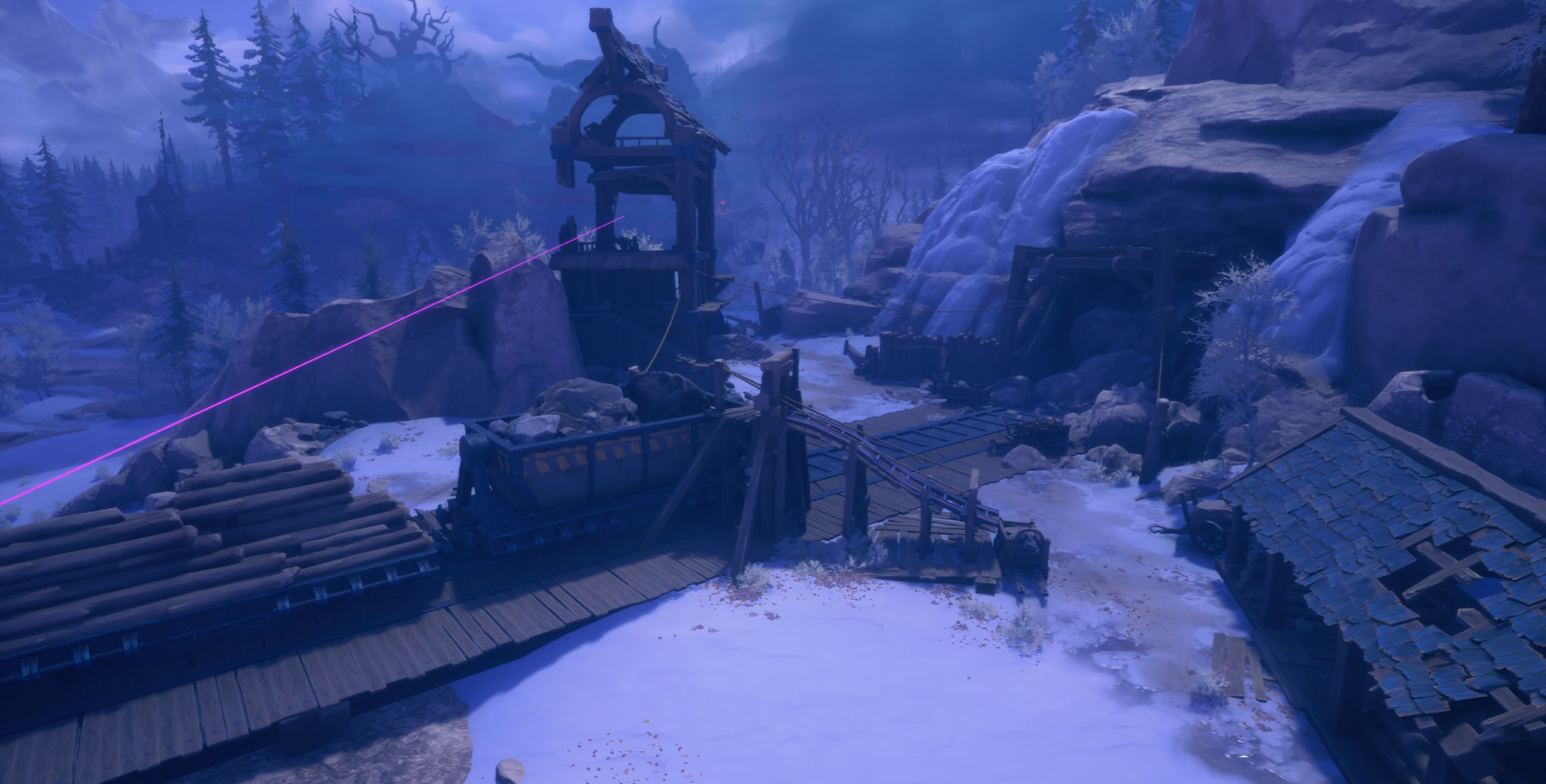
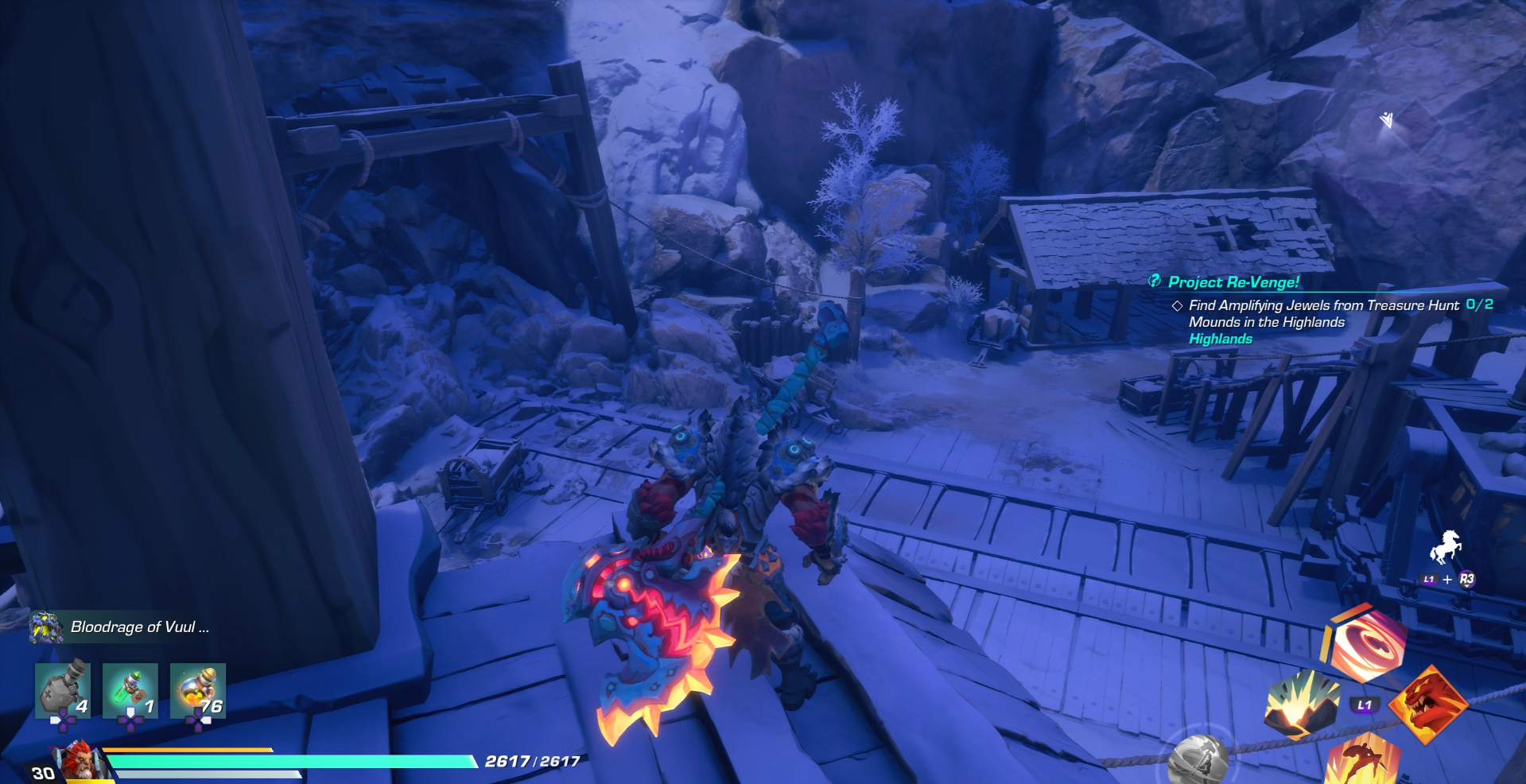
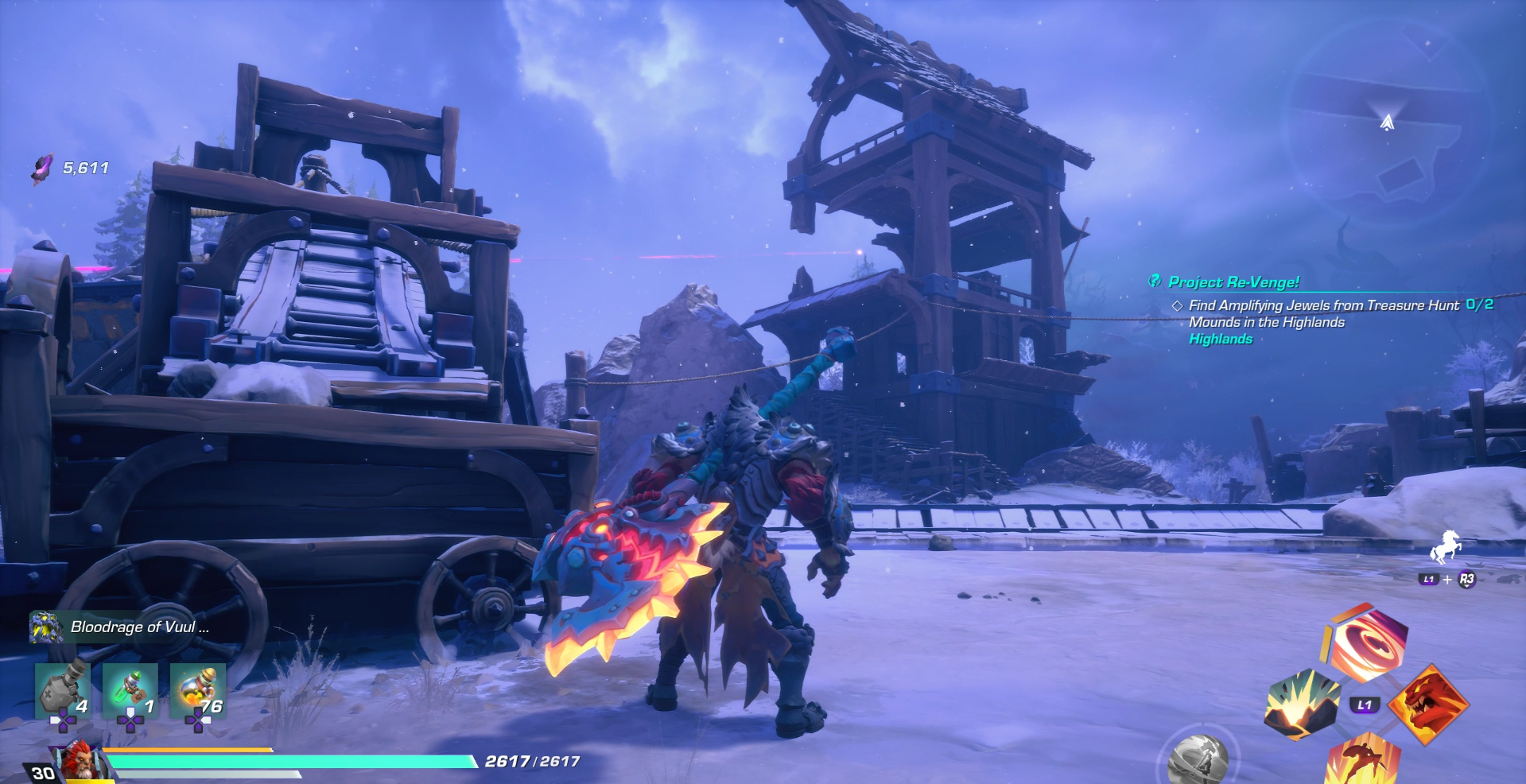
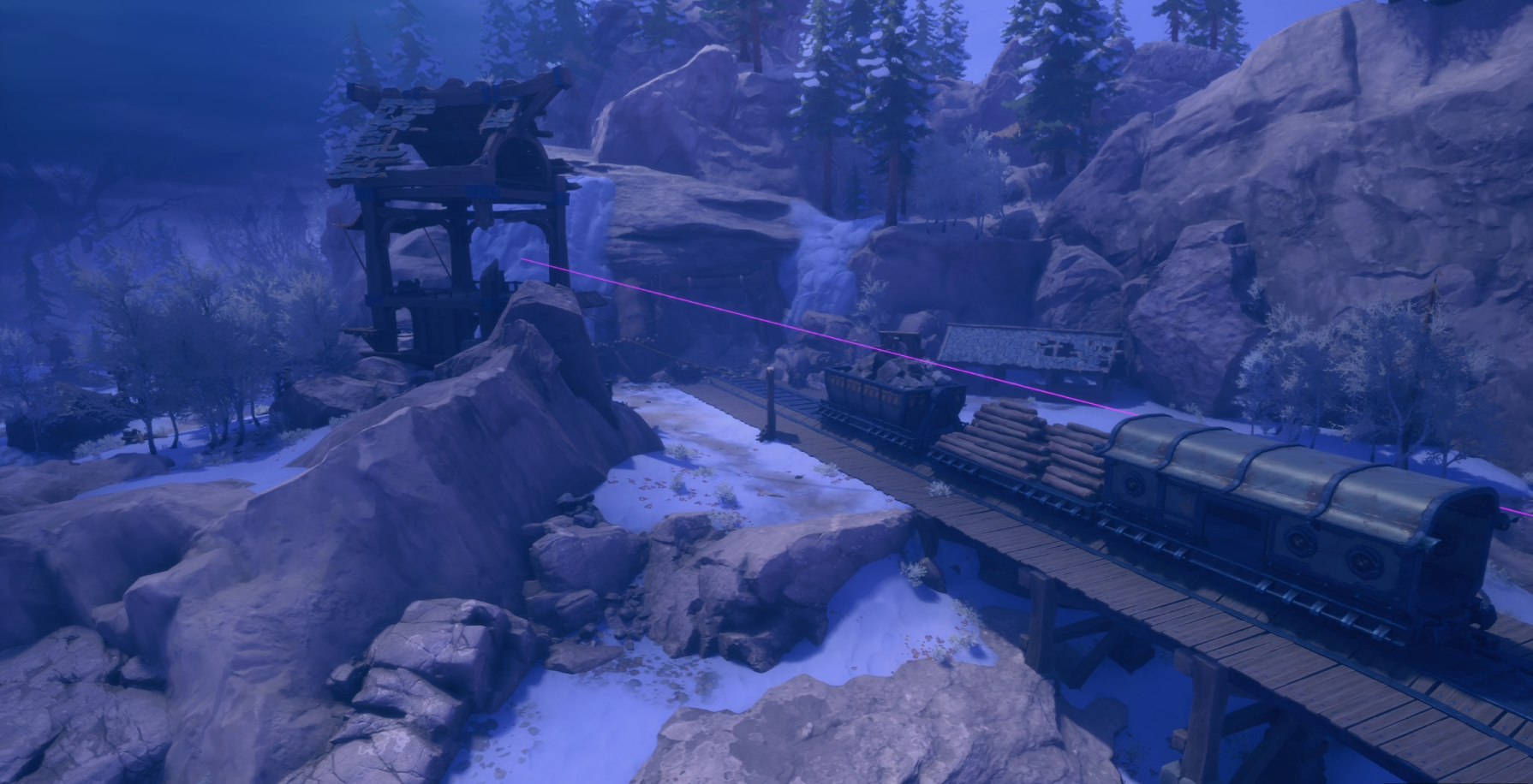
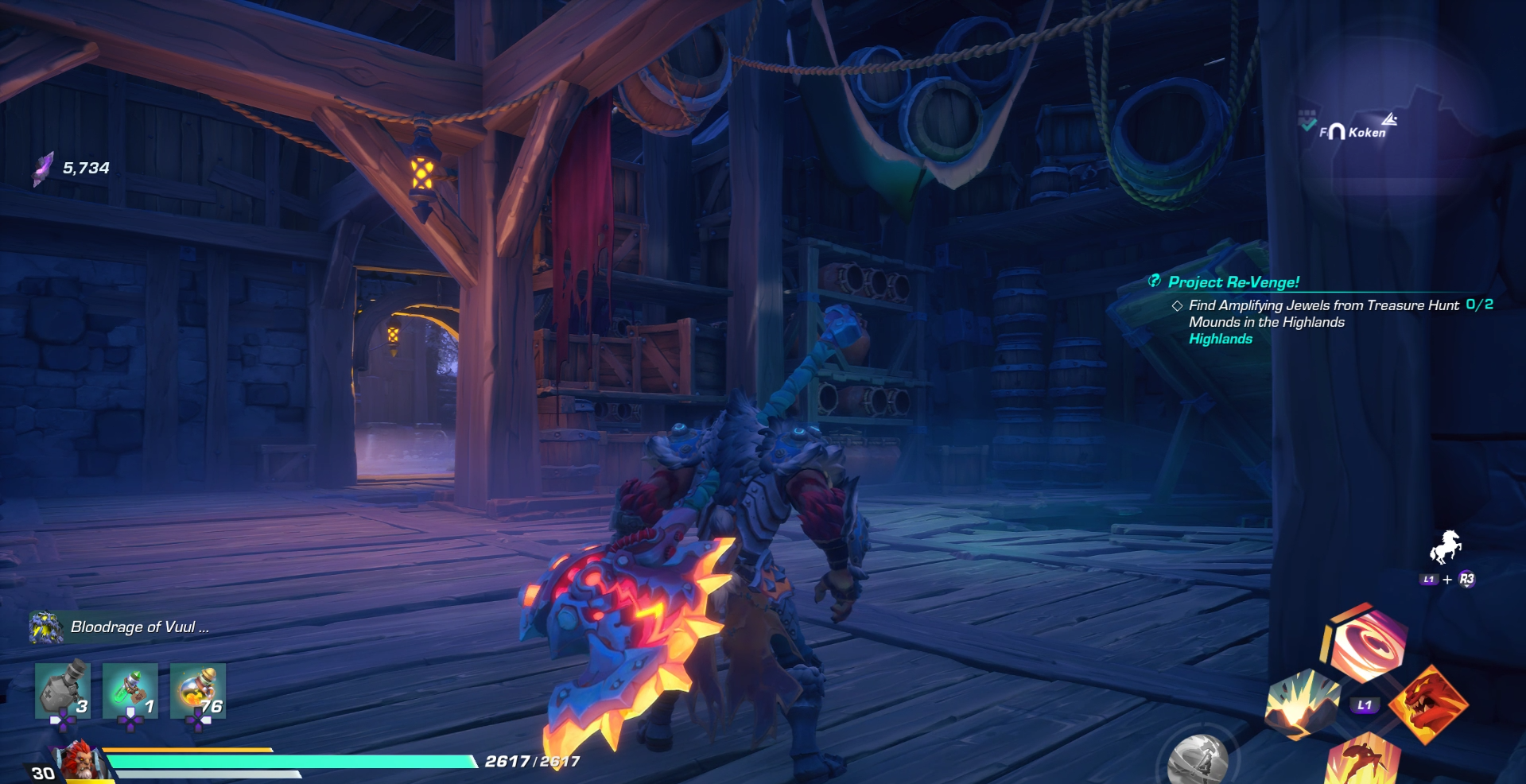
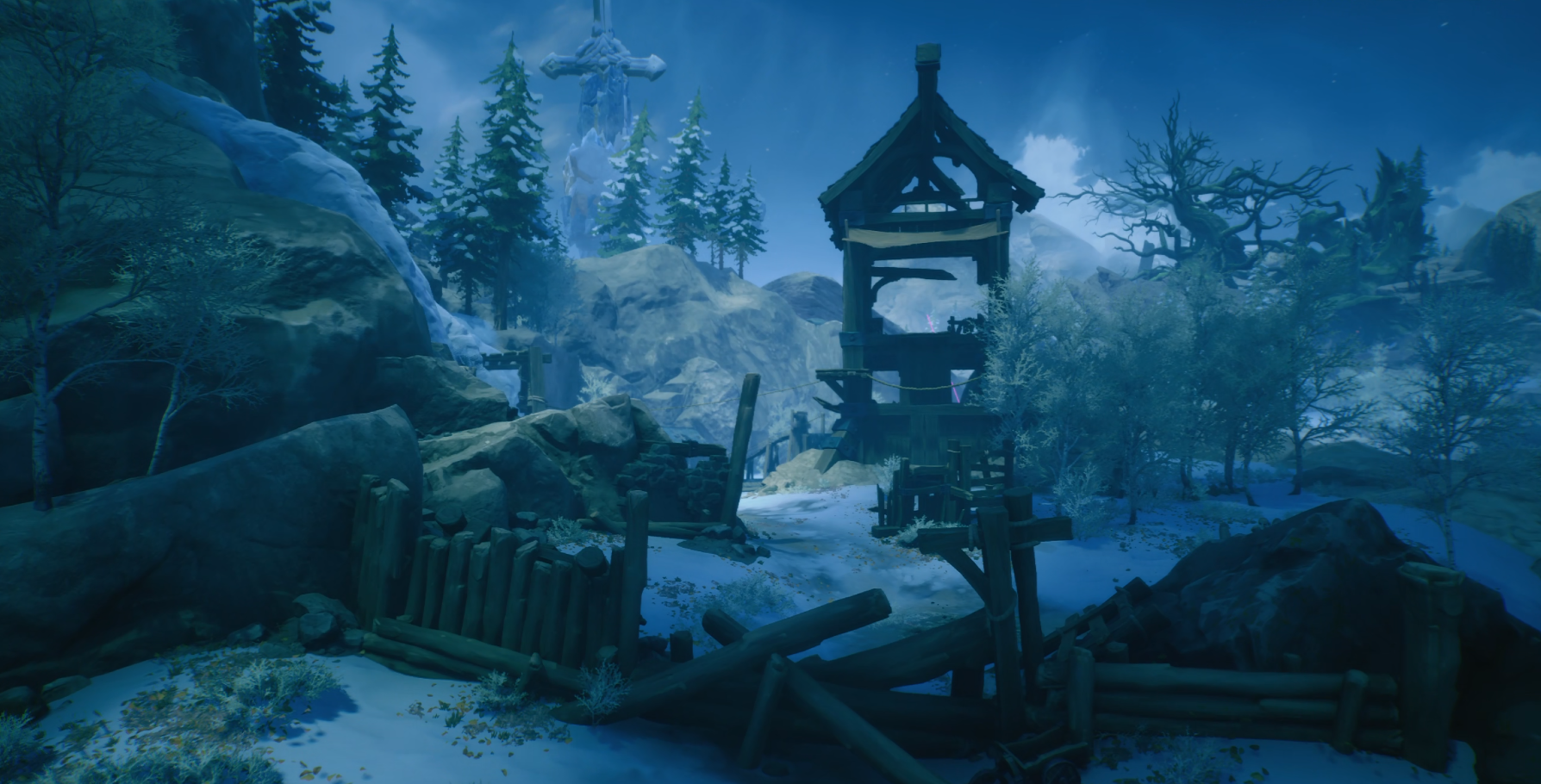
Scripted Events
Koken Outpost Event
After I blocked out Koken Outpost, I started working on a large event that felt thematic to the area. Since the Outpost was one of our core POI’s in our open world zone, the event needed to match the same intensity. The event was designed to help create a feeling in the player that they were making an impact in the world.
This was 1 of 2 “take-over” events, in which the entire area would change when this event had spawned in the area.
The player had to do 2 mandatory objects, with 2 optional objectives for extra loot.
It culminated into a boss battle that would unlock the inside of the Outpost.
Reaver Gauntlet
Though I did not block out the Reaver encampment, a lot of feedback early on of the area was that it felt like it was needing something to help elevate the area. Working with the narrative team we came up with something lore-appropriate, called the Reaver Gauntlet event, that I scripted.
The player is locked inside of the arena and has to kill all of the major Reaver mini bosses found throughout the open world zone.
This event was designed to help end game players farm specific boss drops in a centralized location
Basements
Basements were something that I pushed pretty heavily for when we were designing our open world zone, Frostmarch. I was able to prototype how they might look and work in our early stages of designing Frostmarch. Feedback was really positive on the basements, so I went through our old open world zone and implemented them there.
The basements helped create a more rewarding experience for players who were fully exploring the area.
They were designed to be shorter levels that would help break up gameplay pacing from the vast outside open world zone.
I also ended up scripting puzzles to help make each basement feel unique.
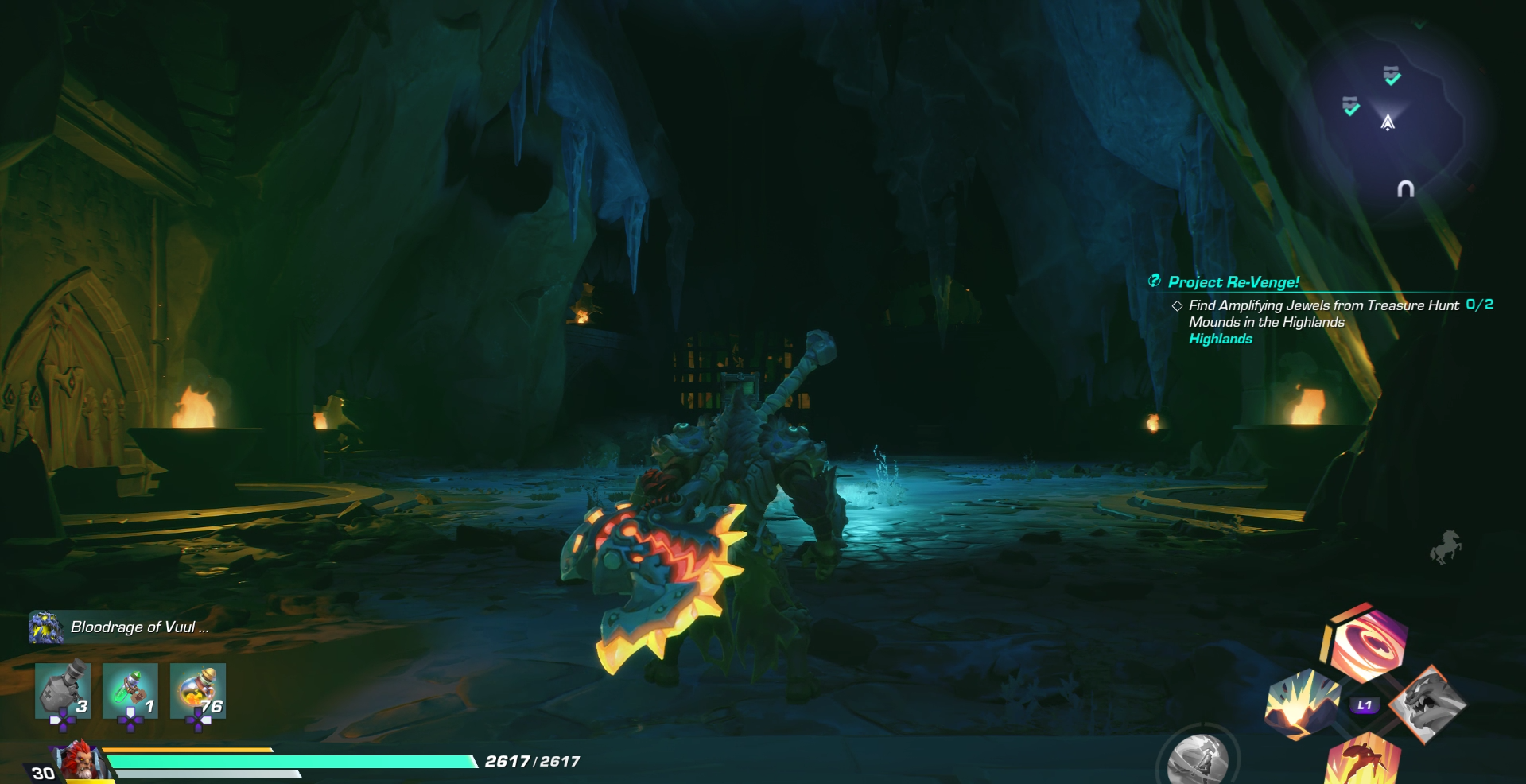
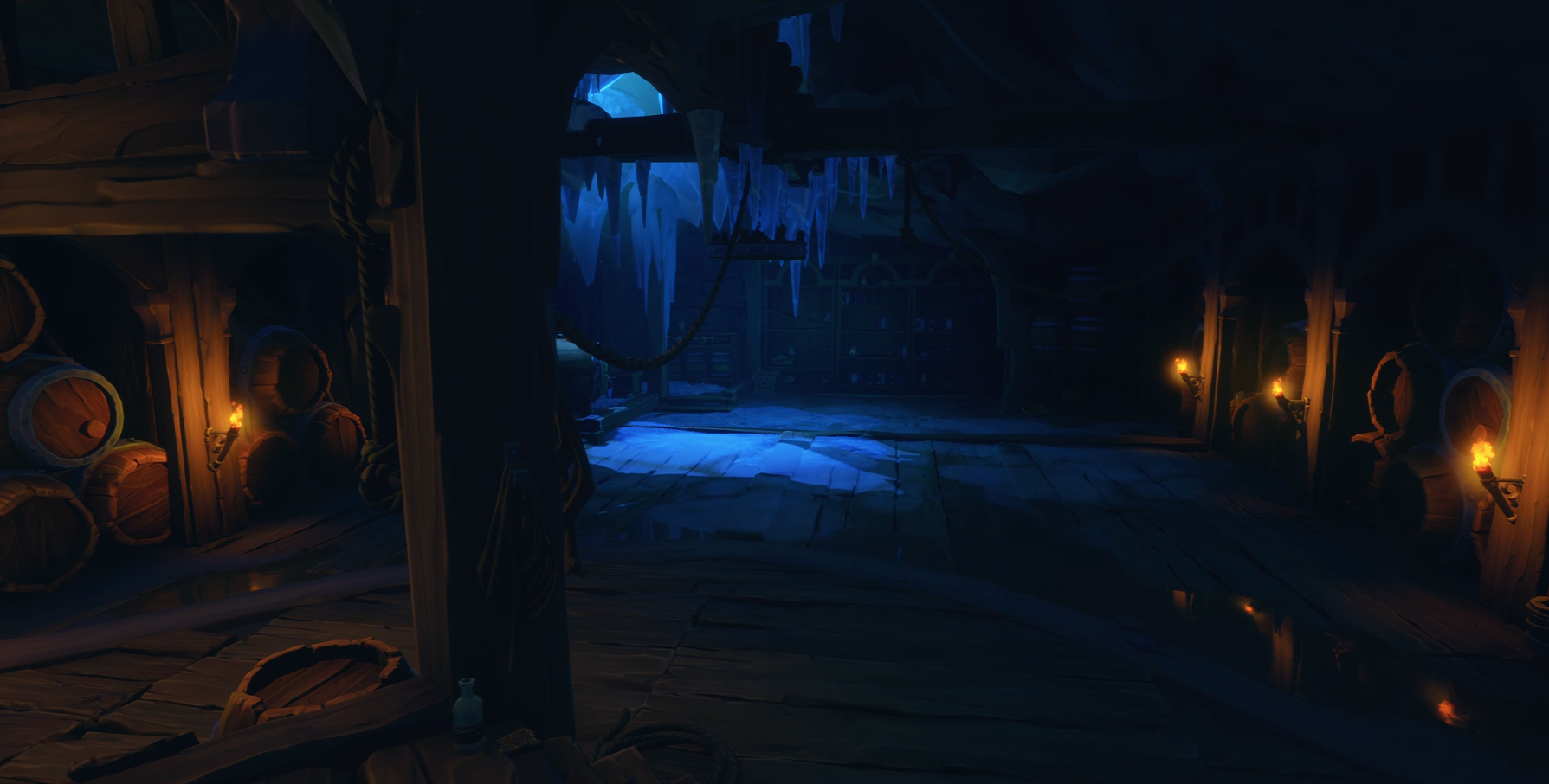
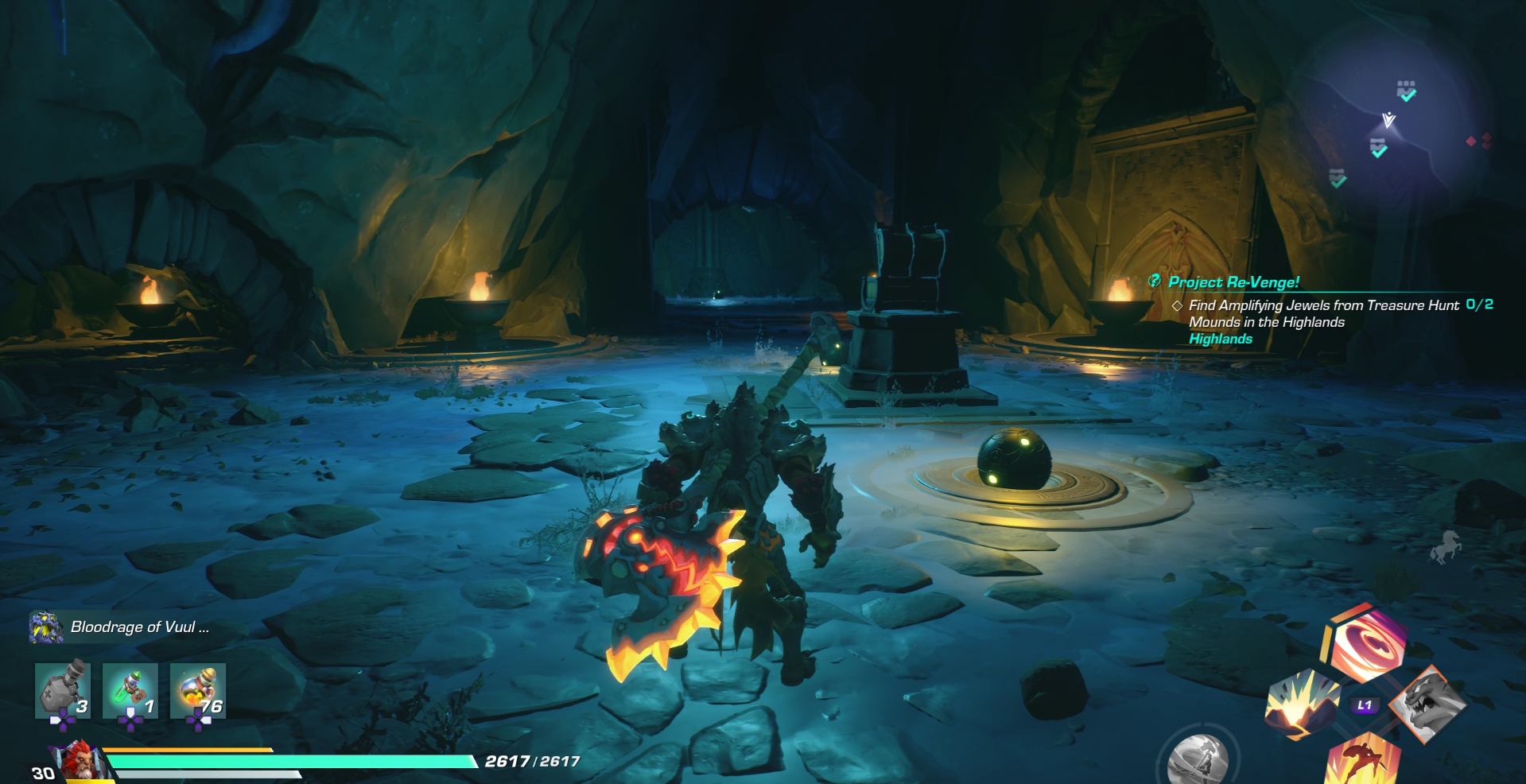
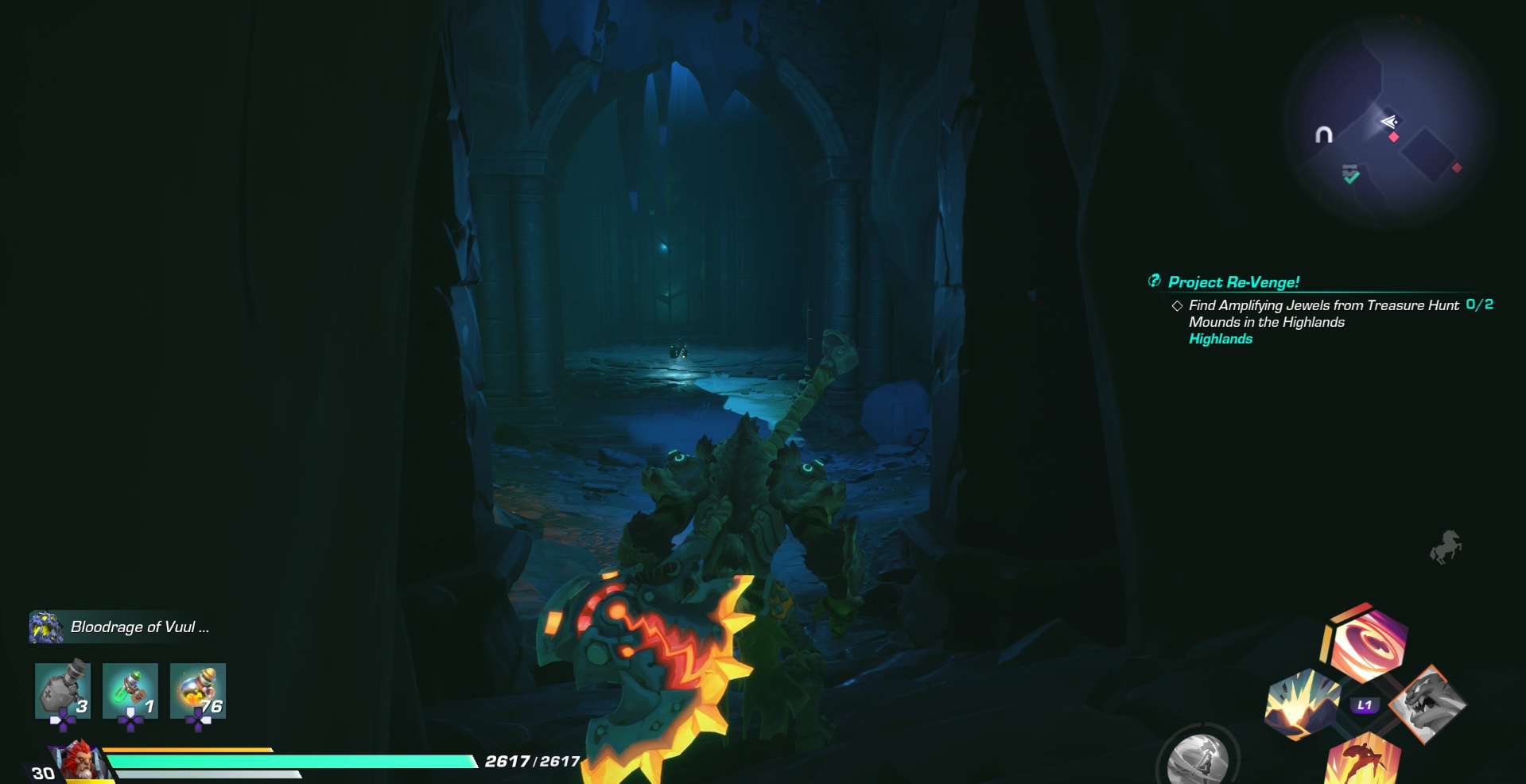
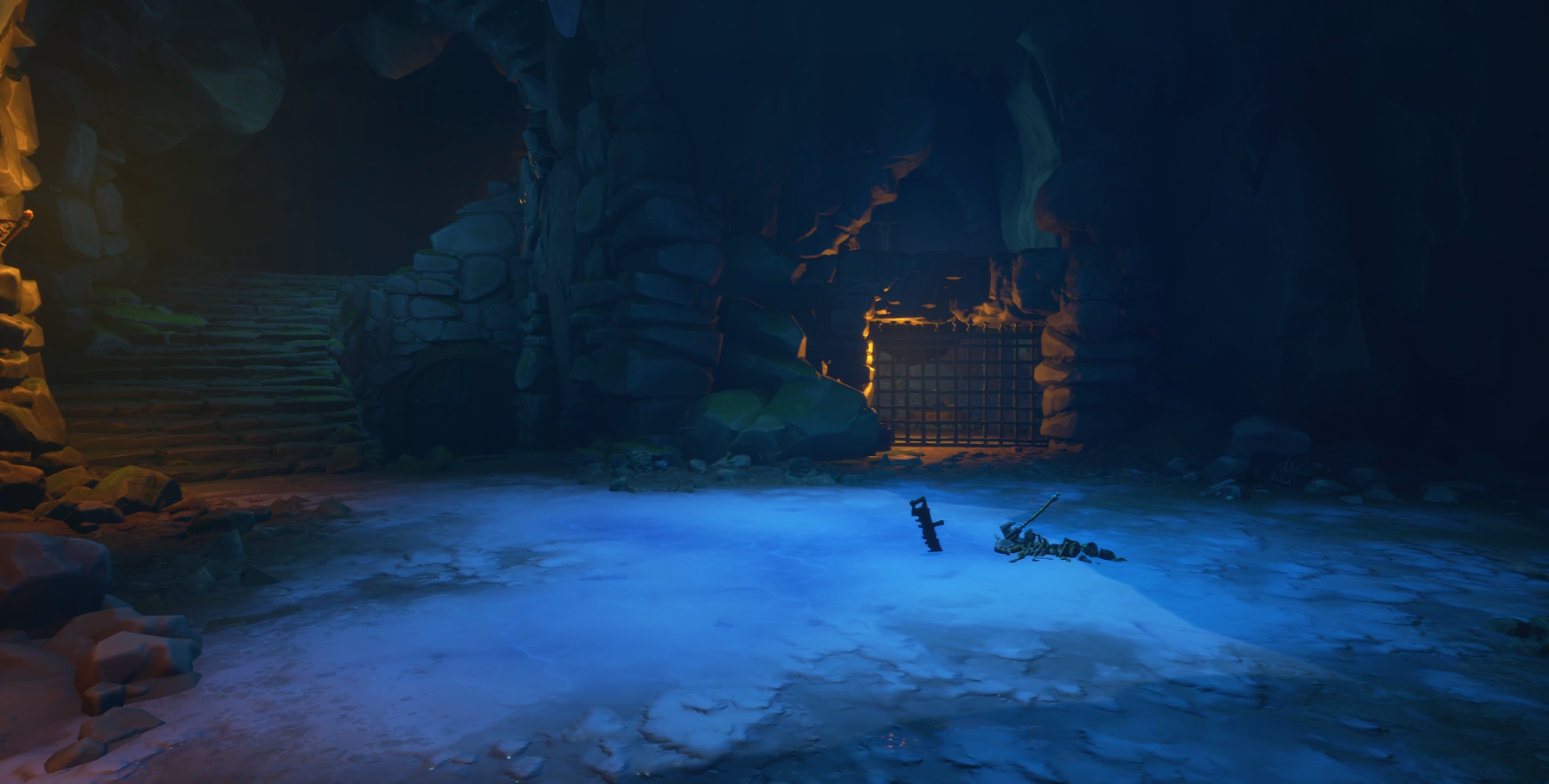
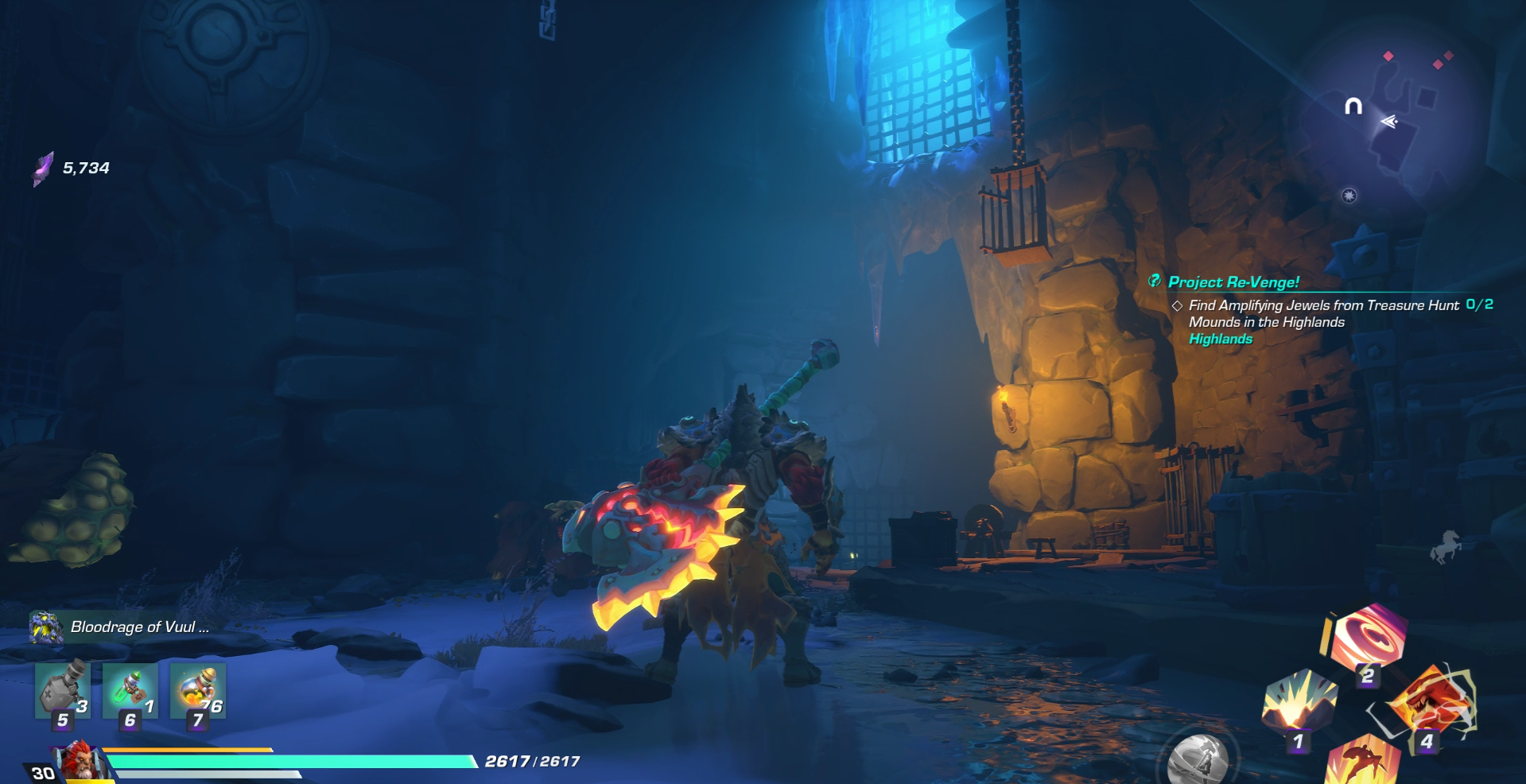
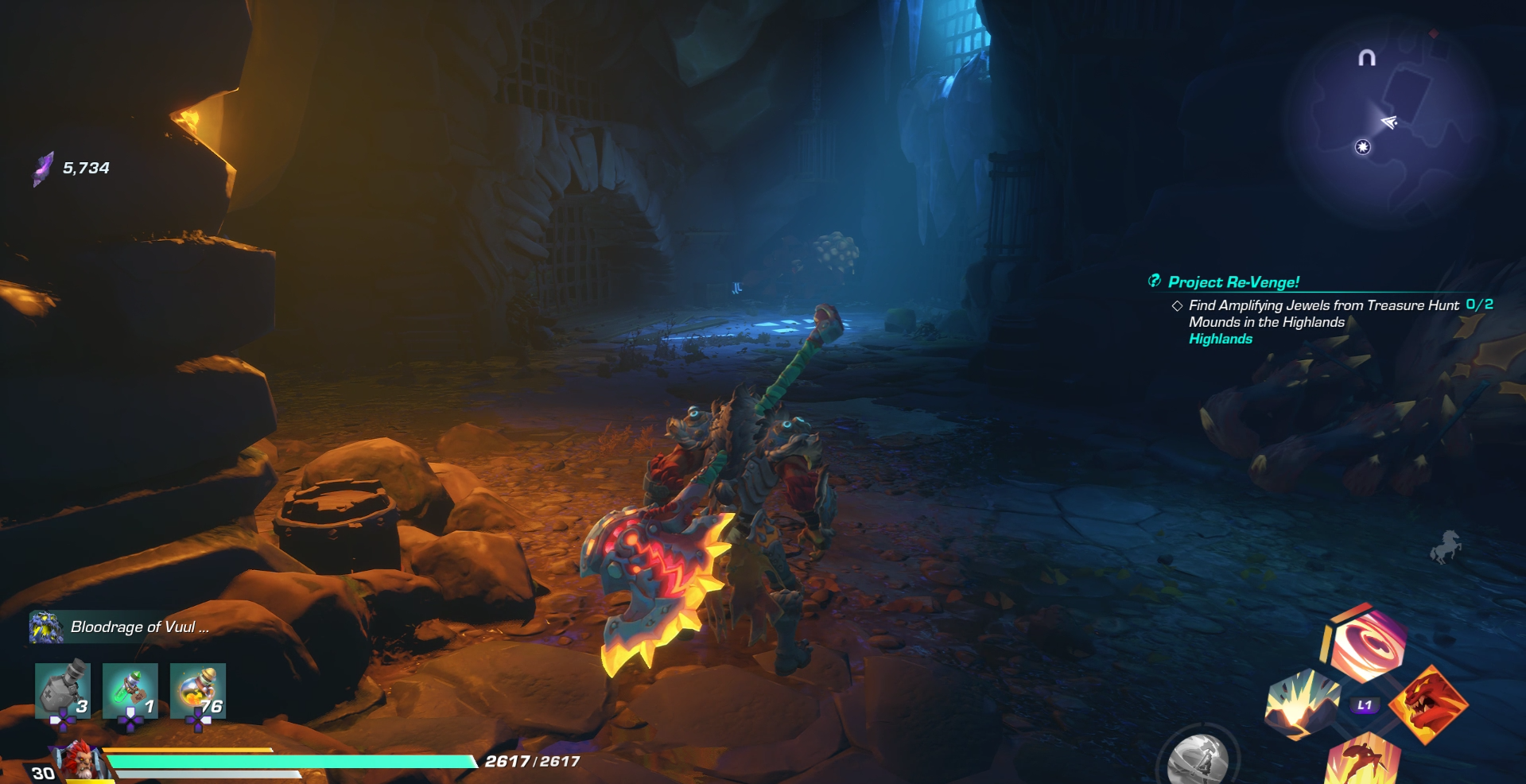
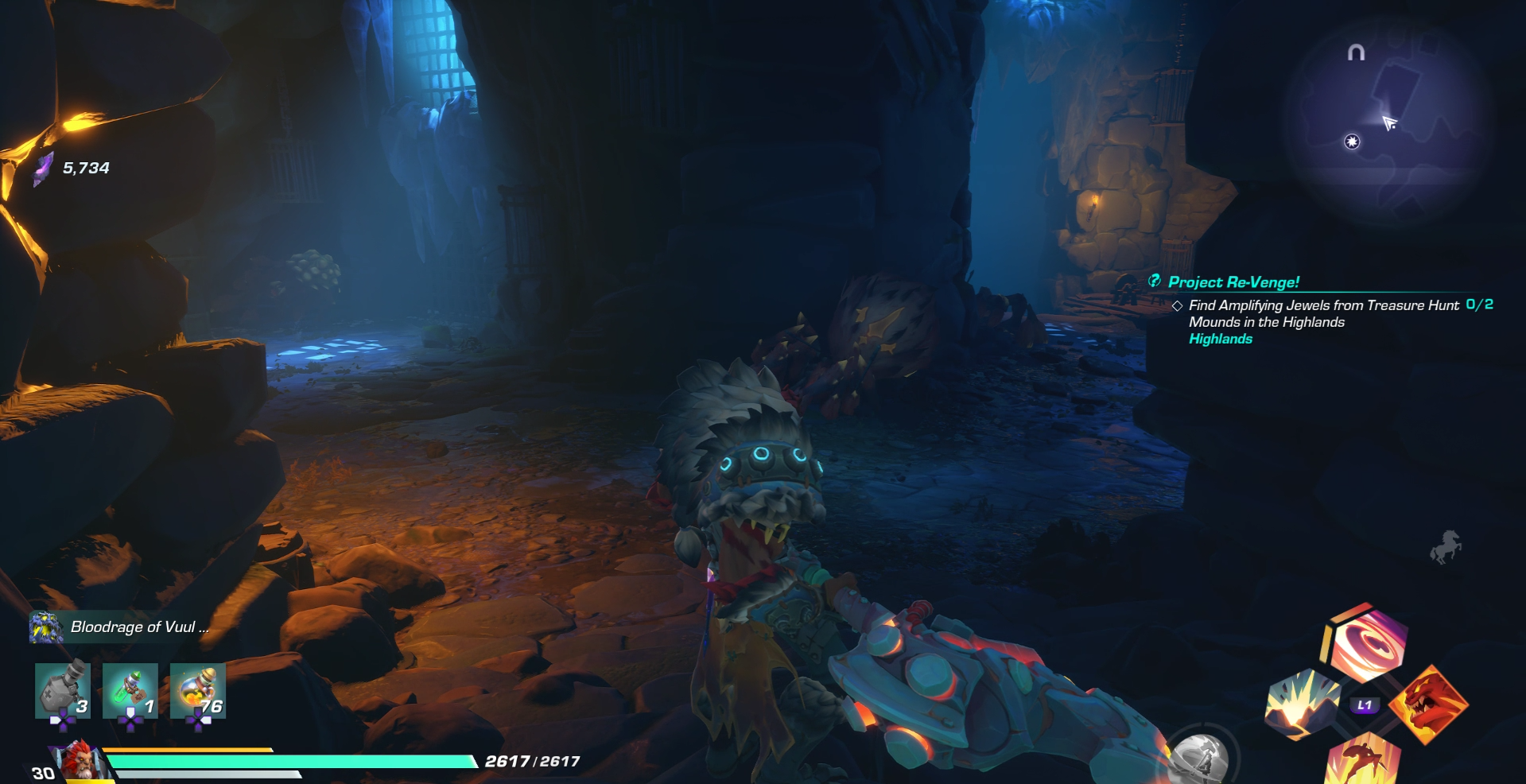
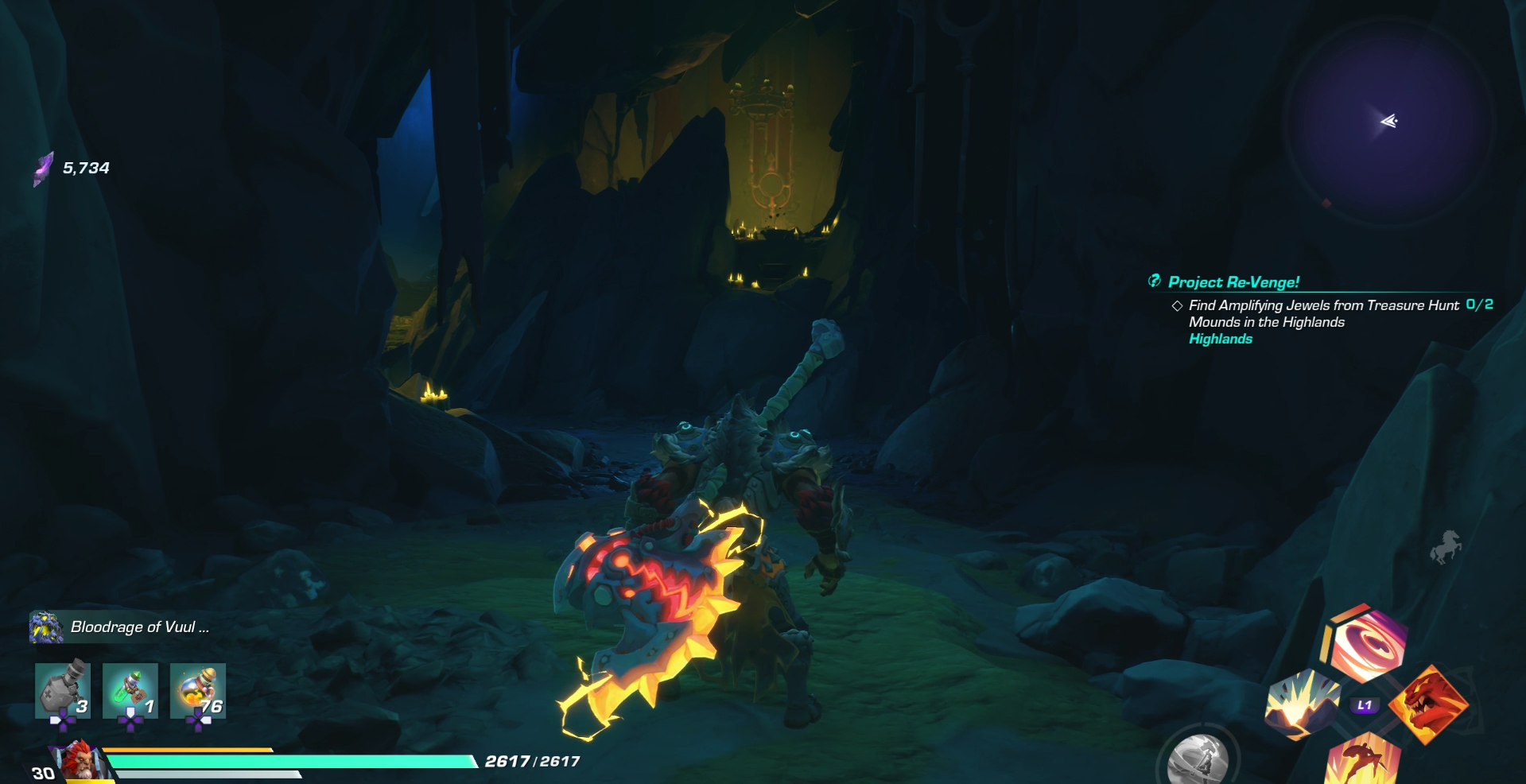
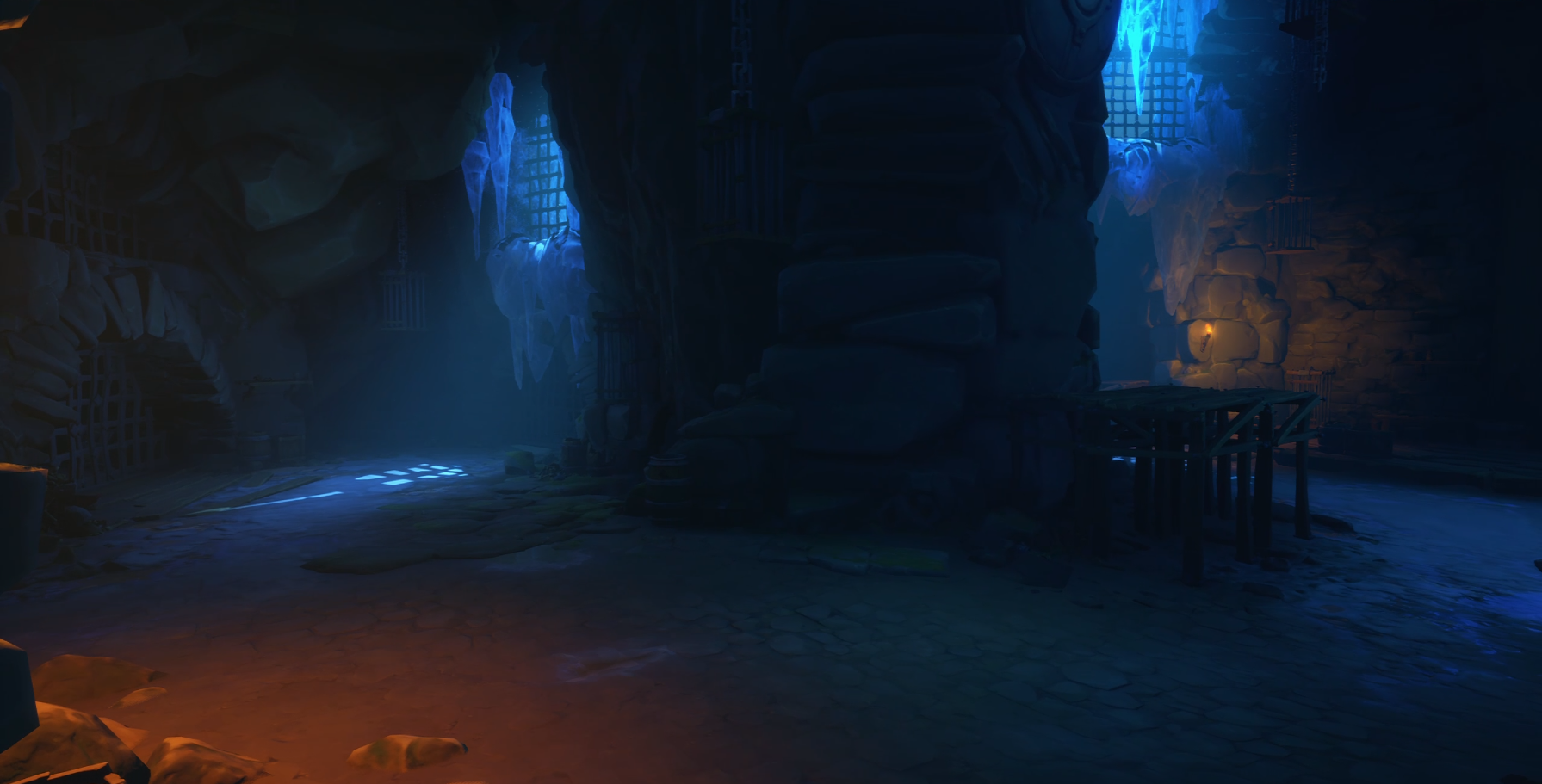
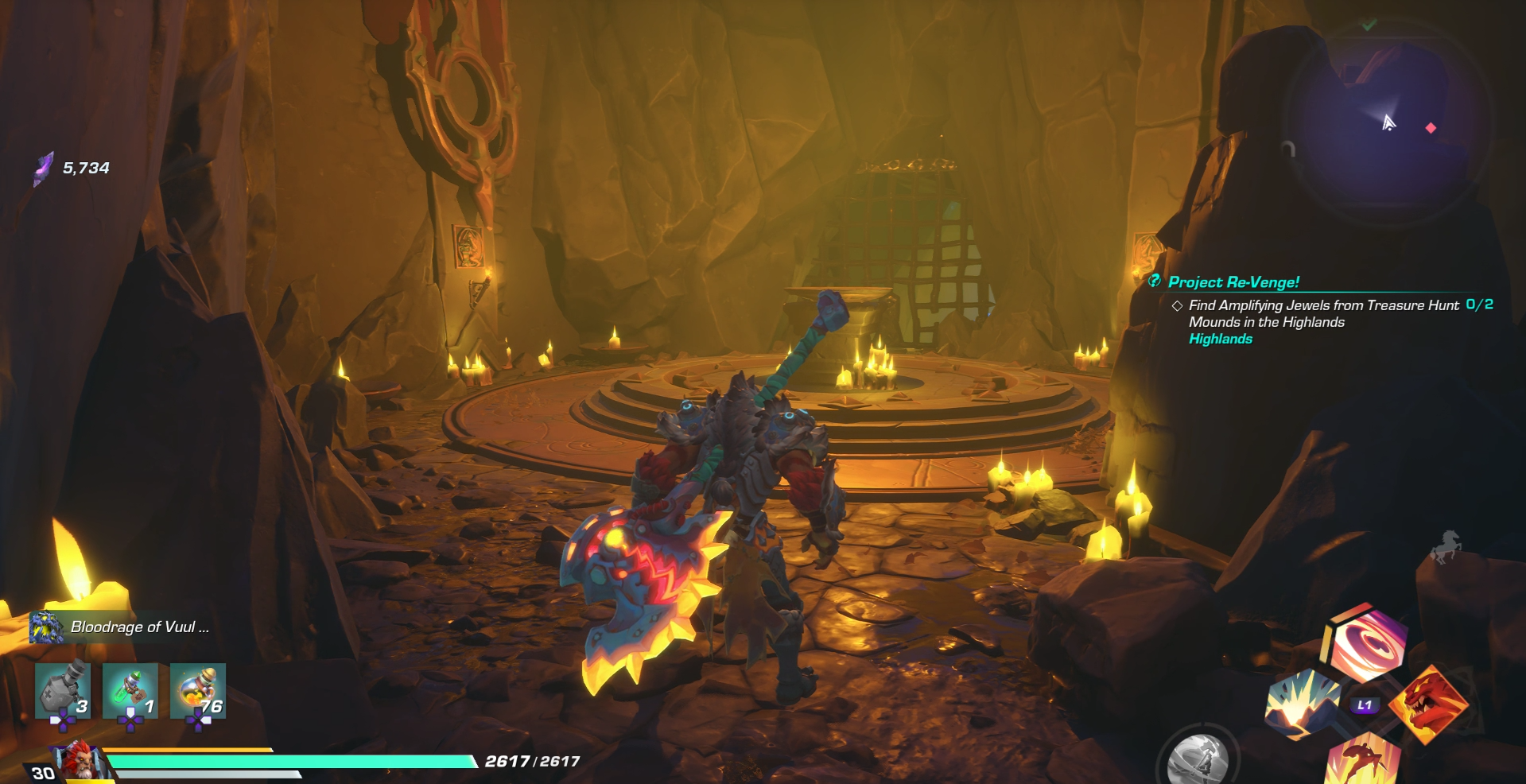
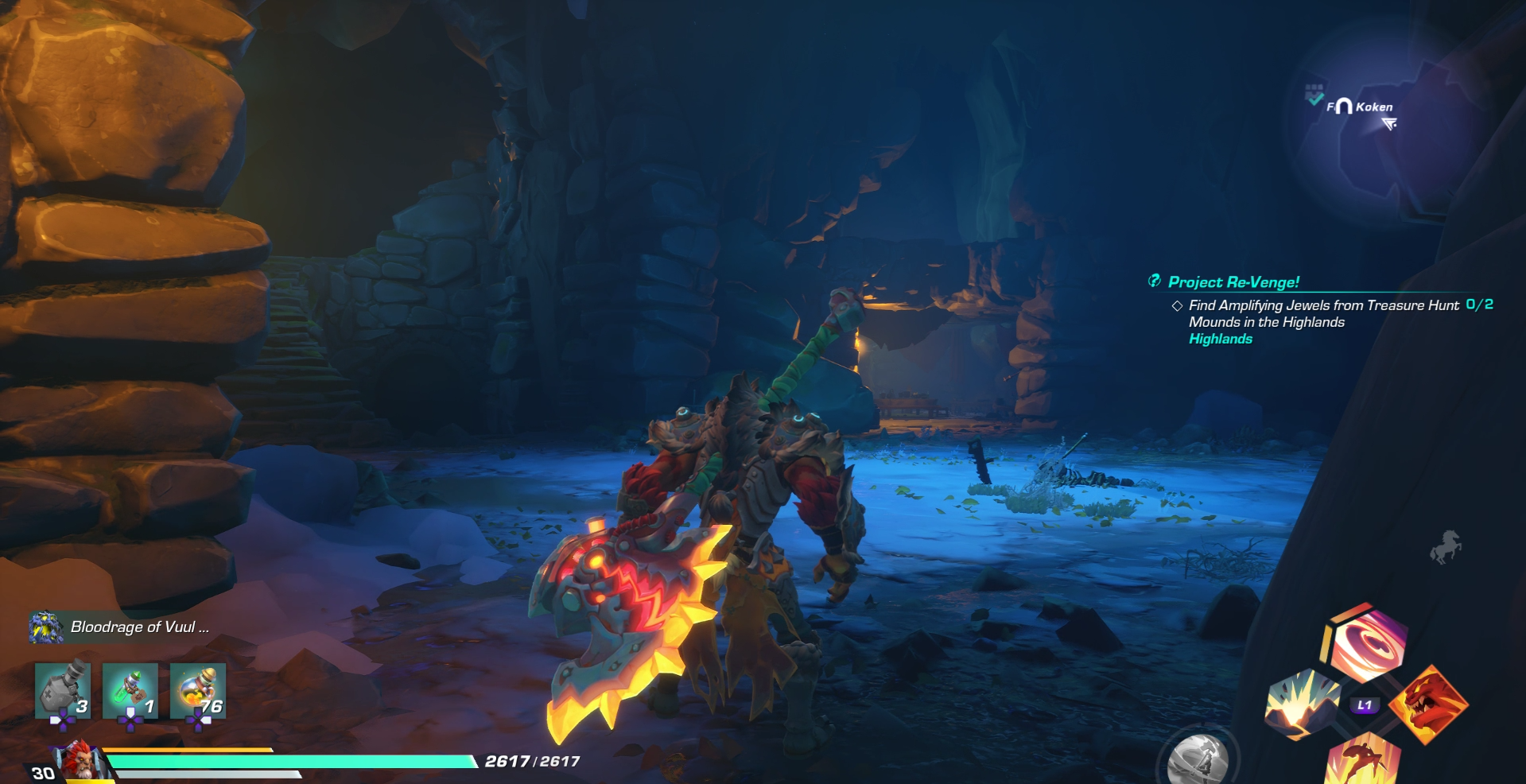
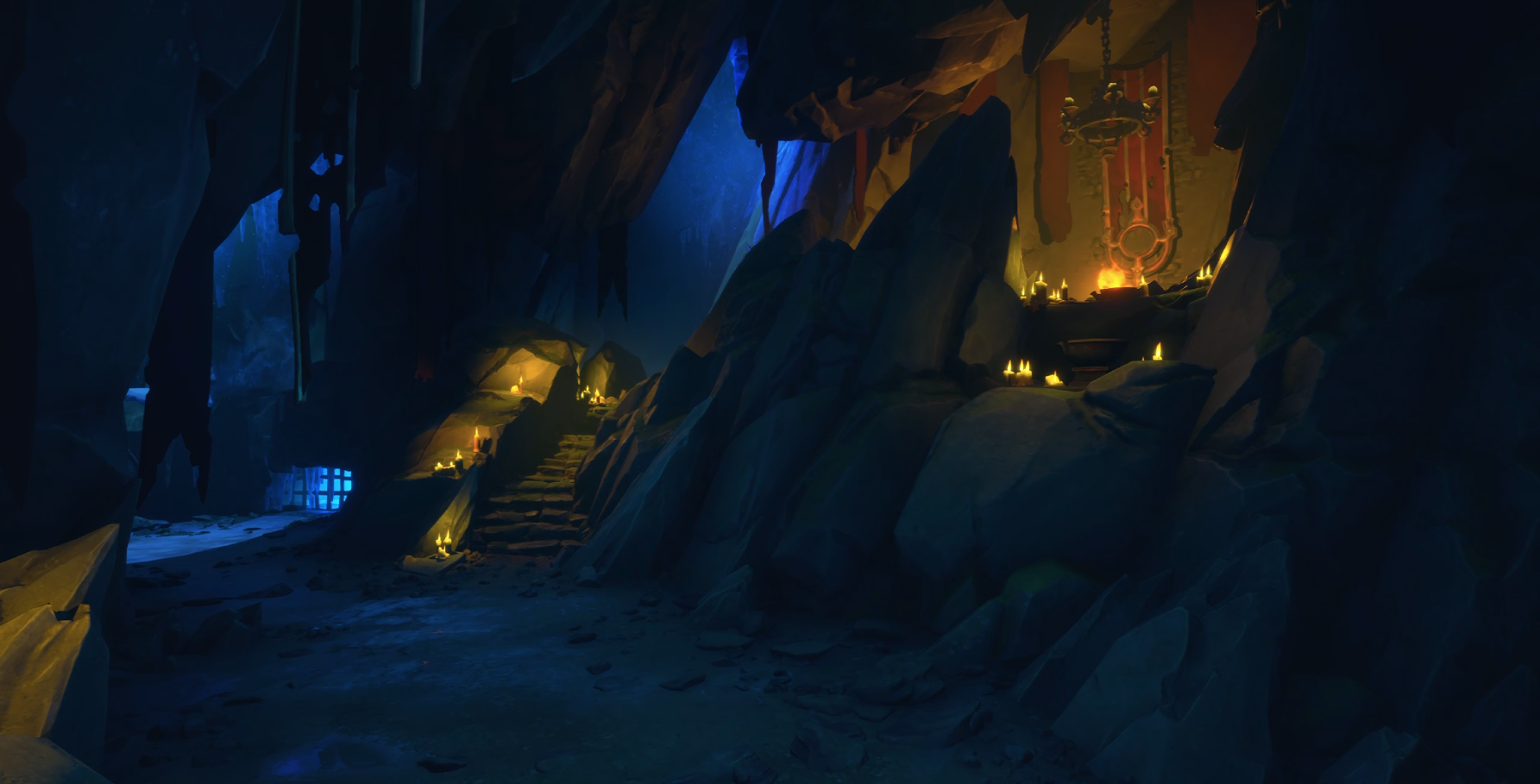
Scripted Puzzles
More complex puzzles
We would often separate our puzzles into two categories, complex puzzles with one solution and puzzles with randomized solutions. There weren’t too many instances where we wanted complex puzzles as most of the content we designed for was supposed to be very replayable.
Created a multi-step puzzle that involved the player trying to figure out how to move the rolling ball onto the platforms to unlock the chest.
Used a series of guiding lights as well as specific chokepoints to give hits to the player as to where the next step of the puzzle was.
Combined action gameplay with creative puzzle solving by designing it in a way that players would “attack” the ball to get it to its destination.
Randomized puzzles
Throughout the open world zone, I created 3 different randomized puzzles that were all interconnected into the environment. These puzzles would consistent of random levers in different locations, candles the players would have to light, and sequential switches tied to imagery on the wall.
Designed each puzzle where there are at least 3 different variations for each puzzle that could show up for the player to decipher.
Created to help breakup the gameplay pacing of constantly fighting enemies in the open world zone.
Made the puzzle conducive for both solo players and multiplayer.



